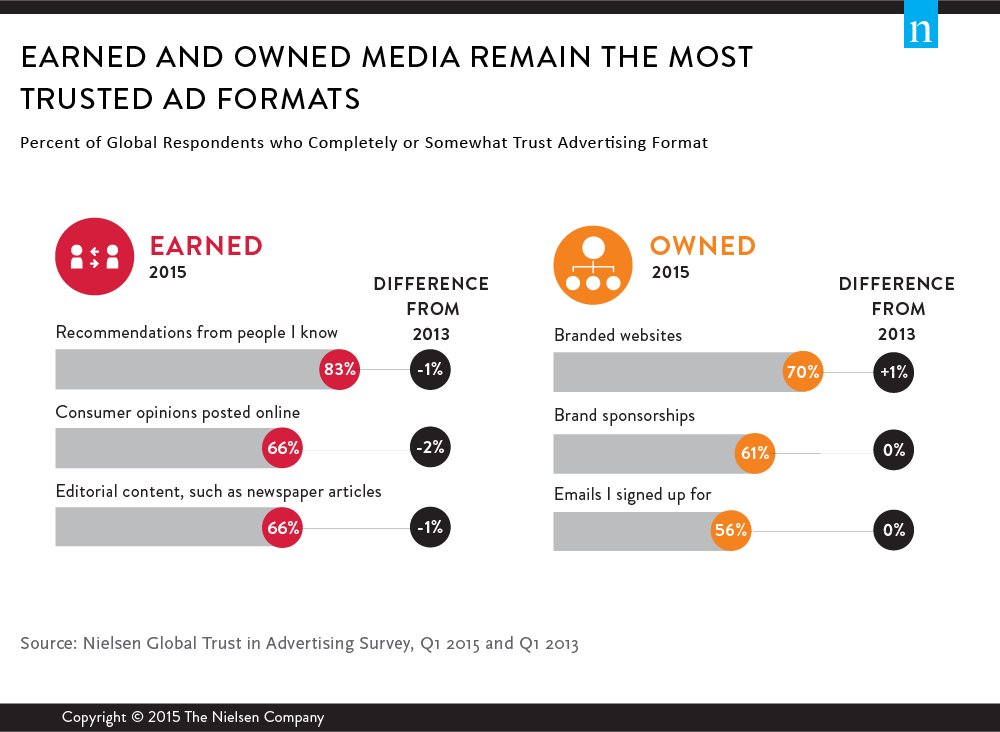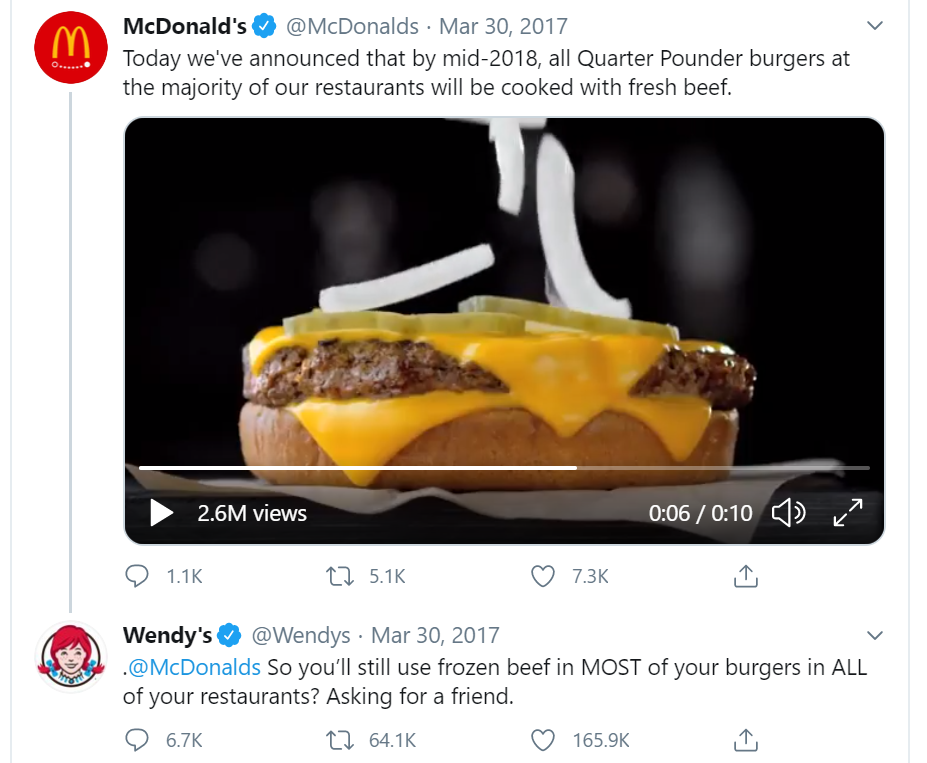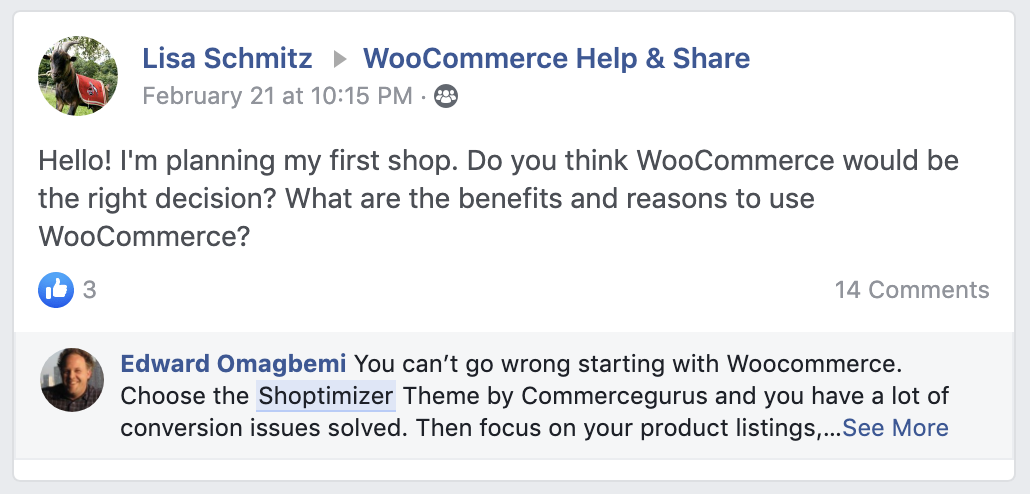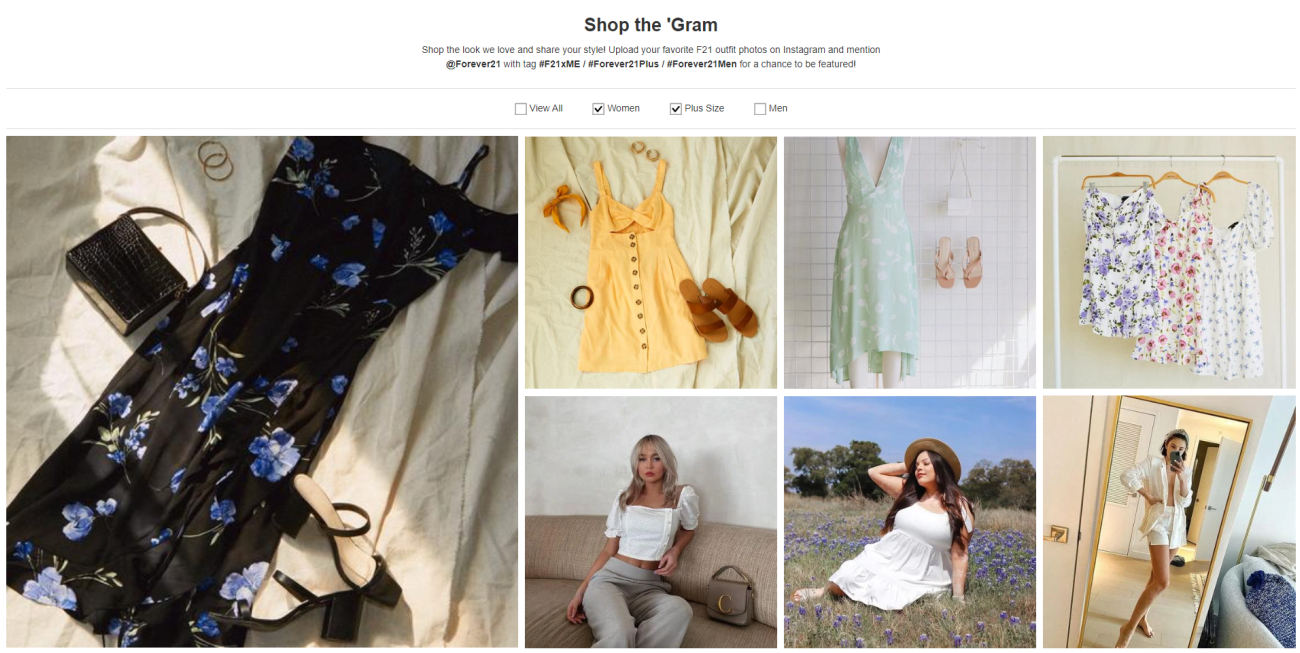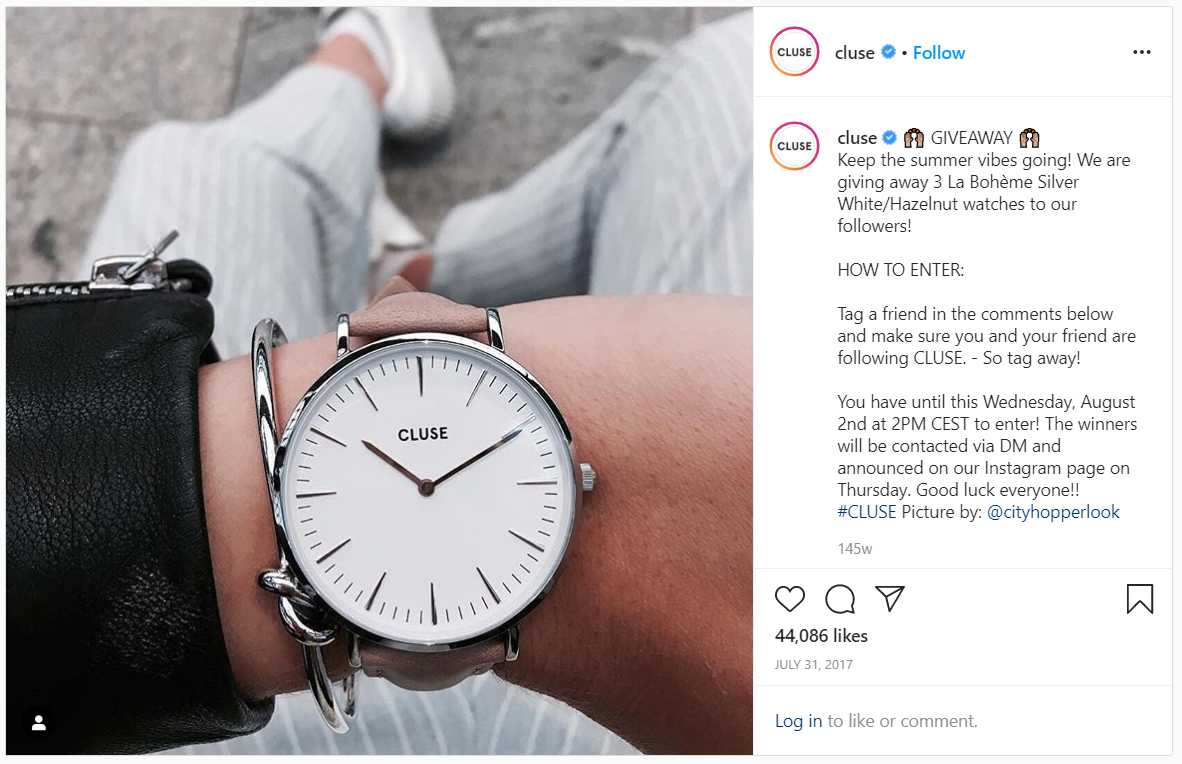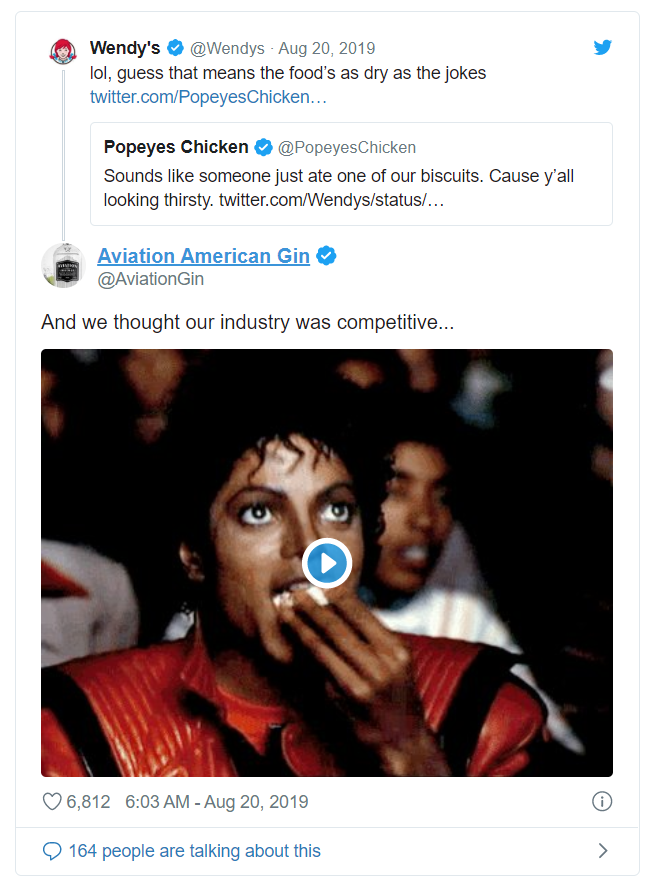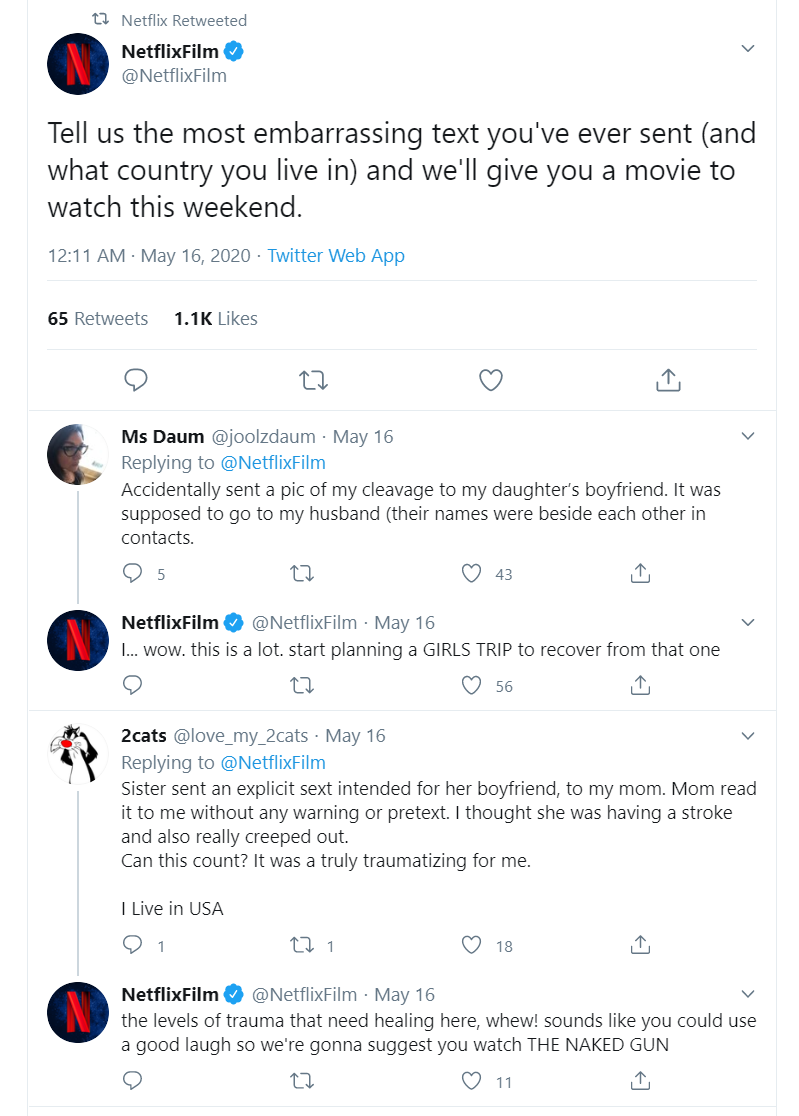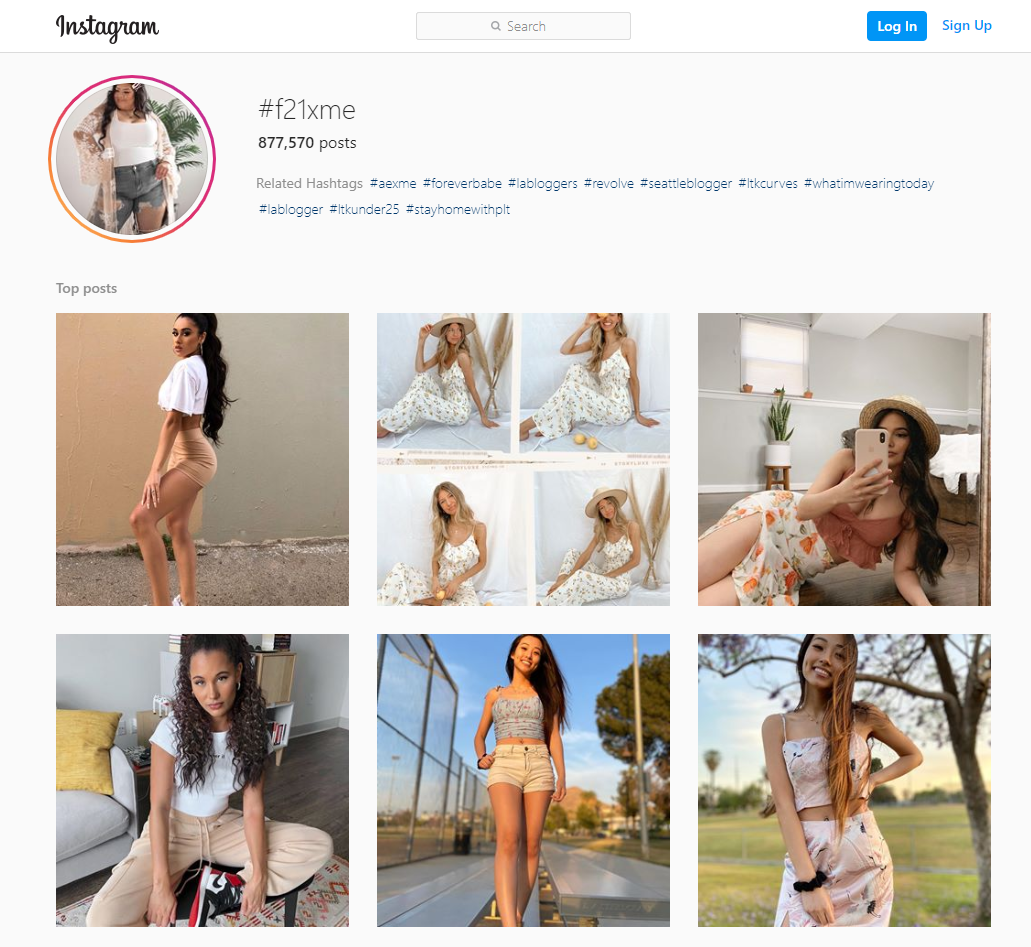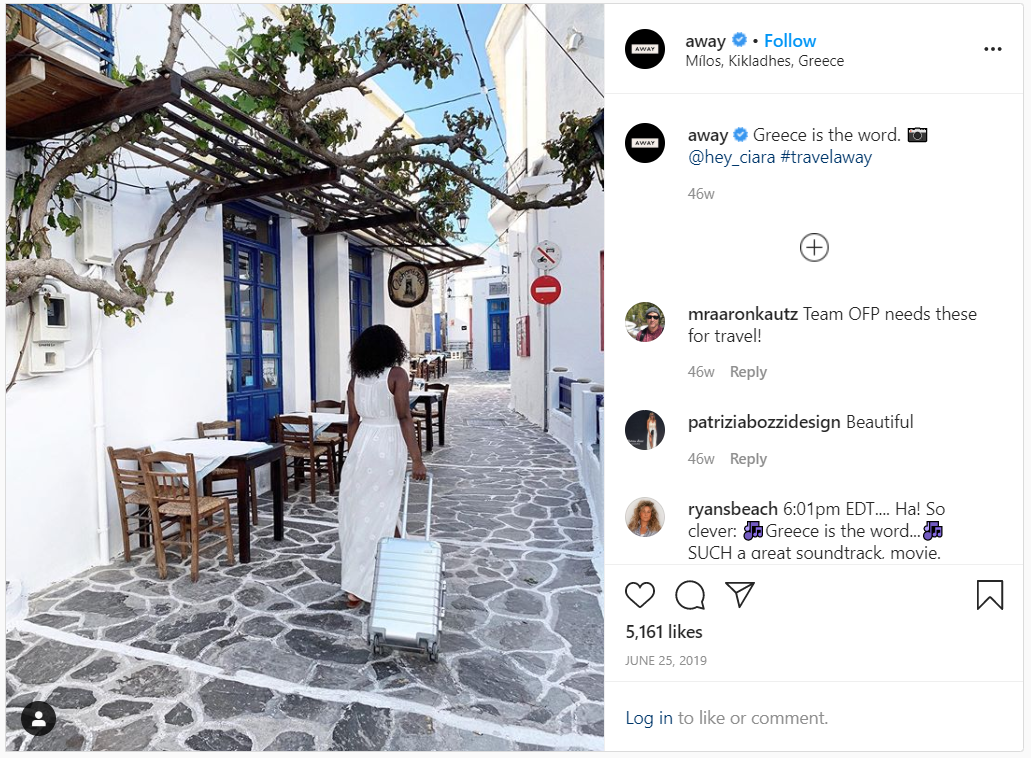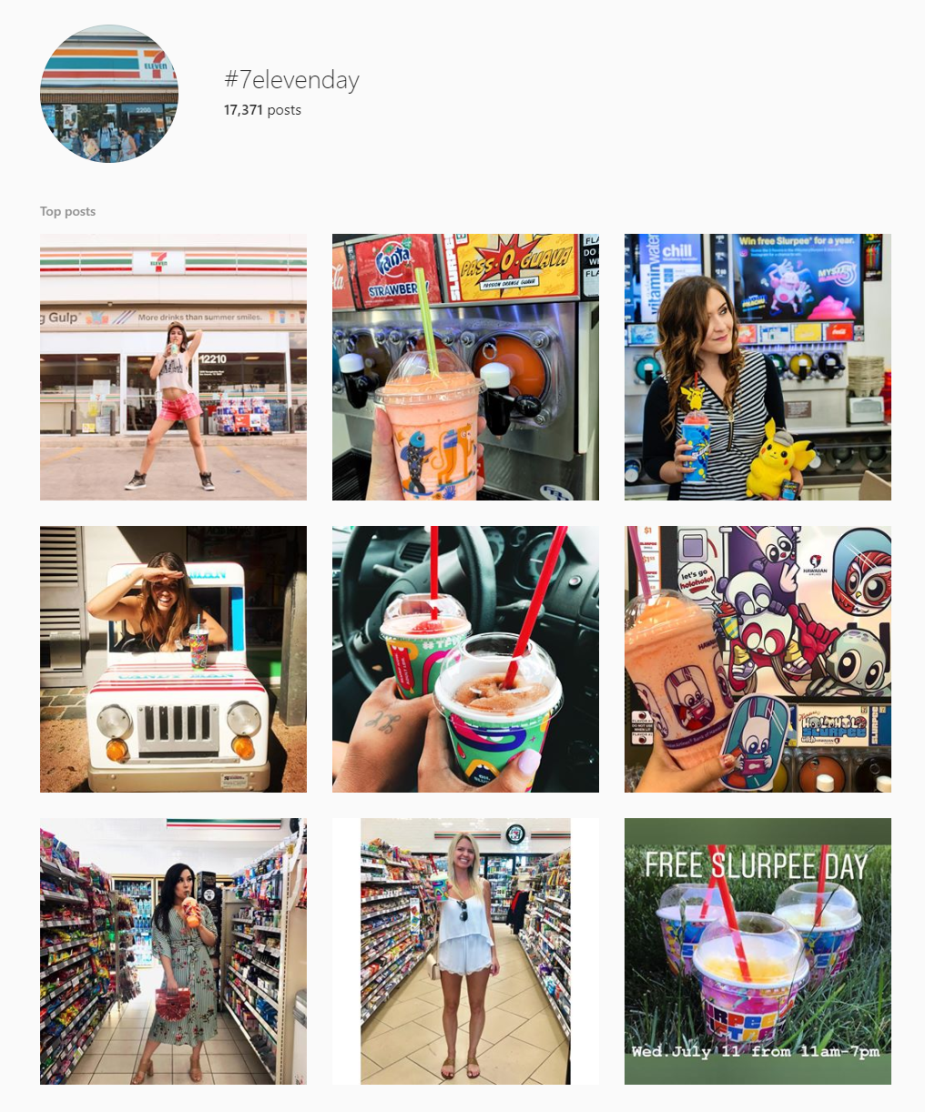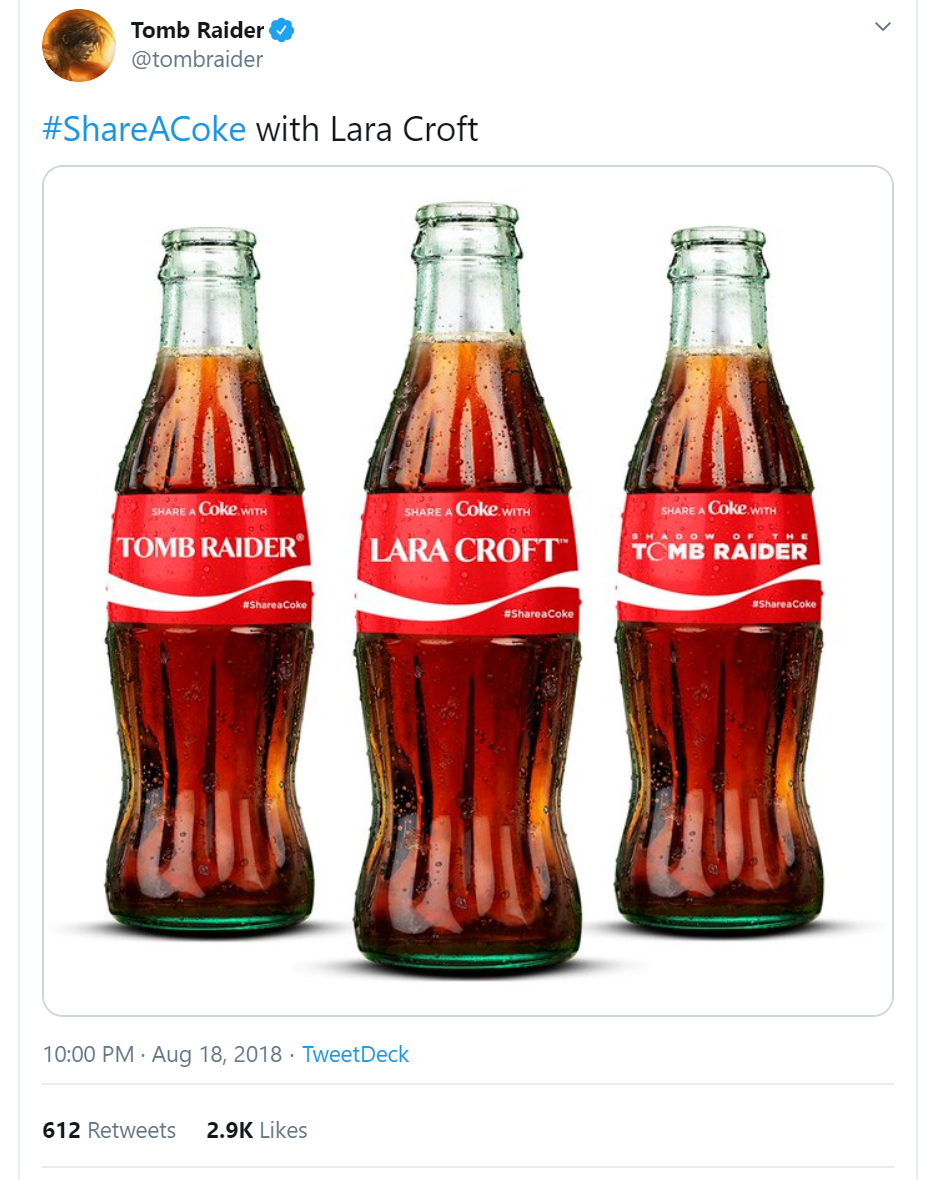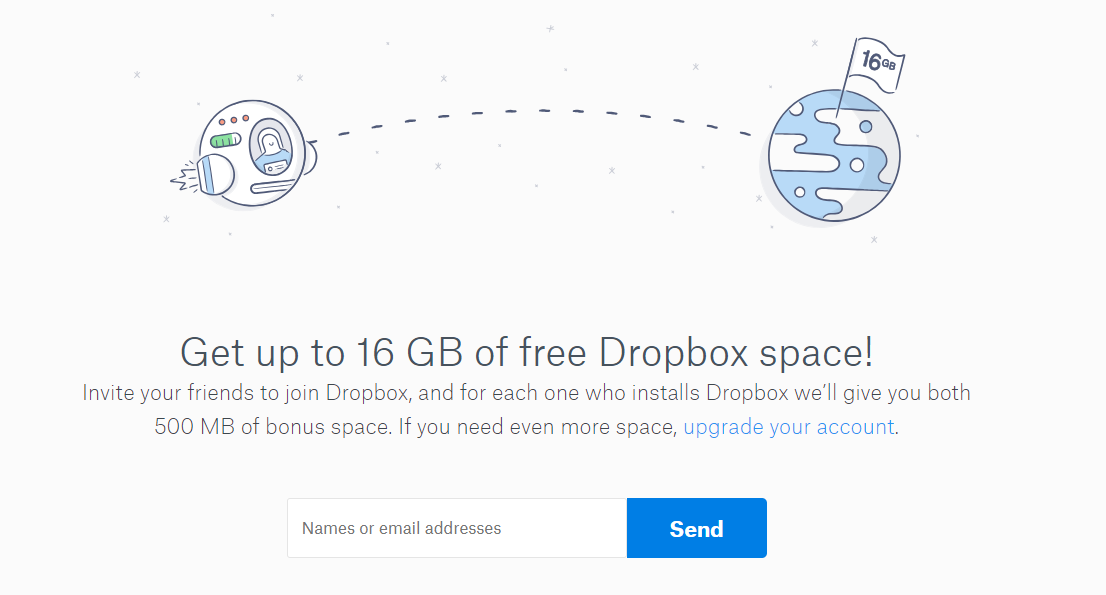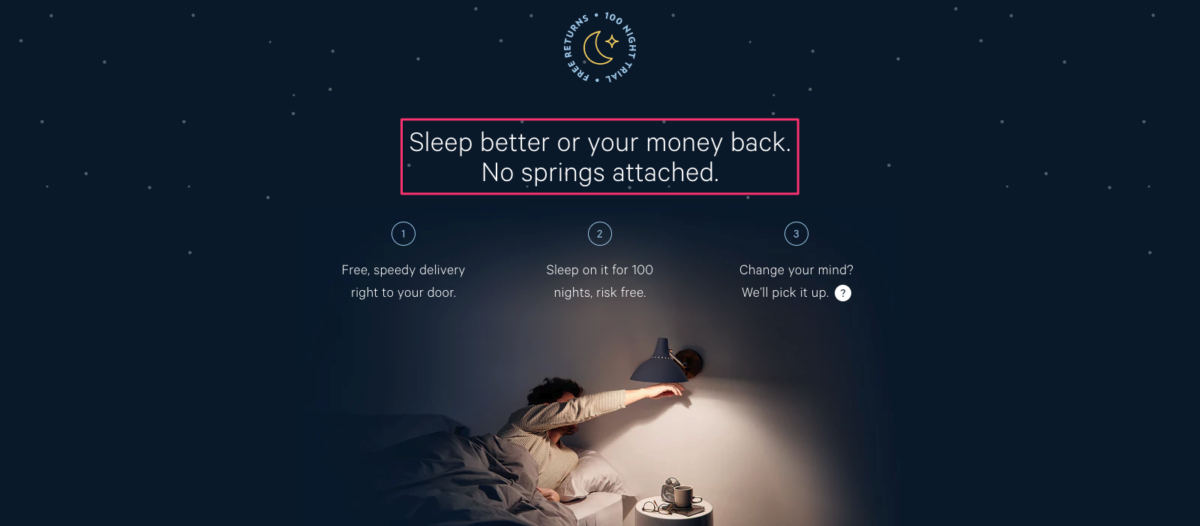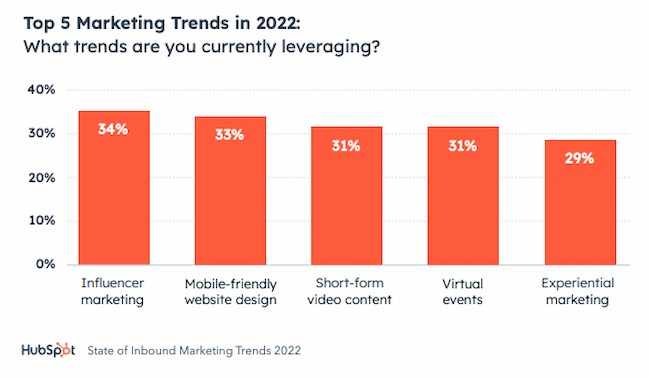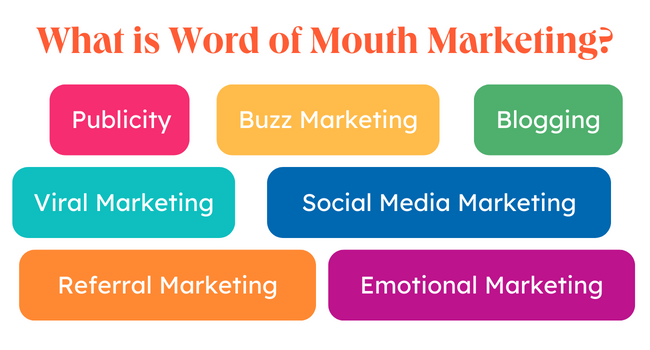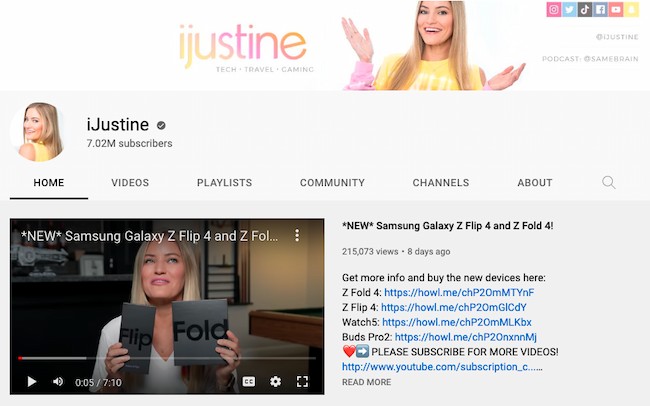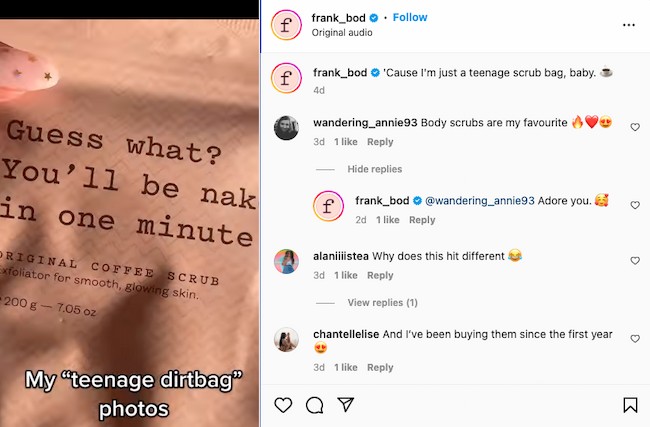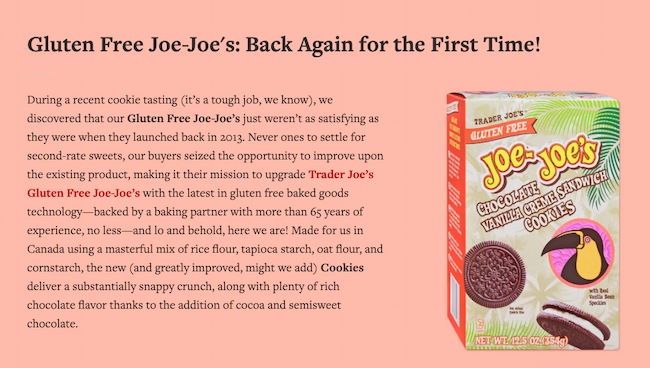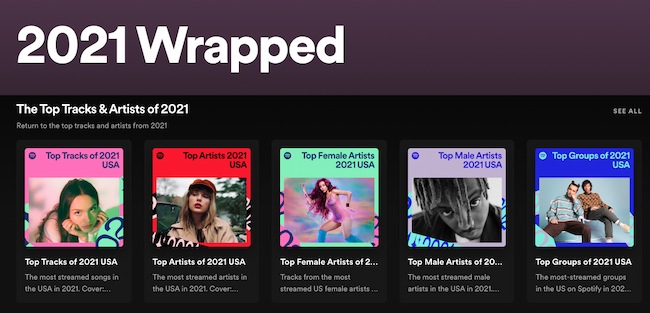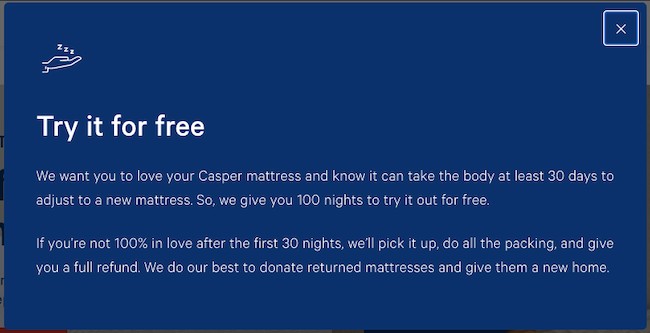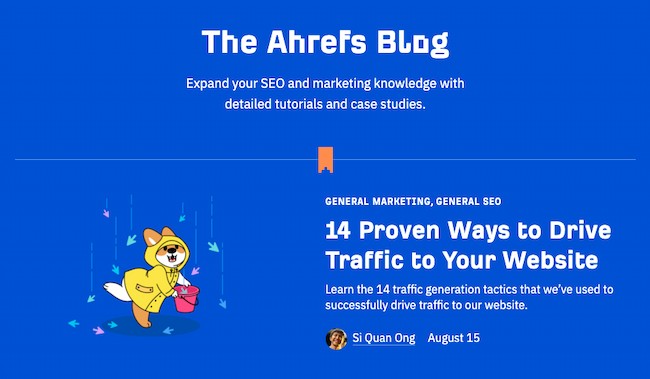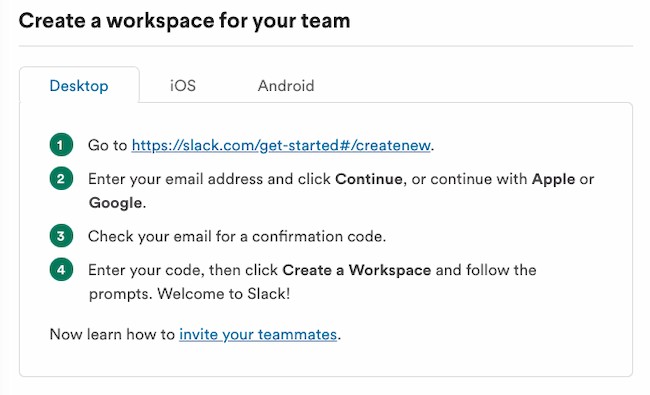From Wikipedia, the free encyclopedia
«WOMM» redirects here. For the American radio station, see WOMM-LP.
Word-of-mouth marketing (WOMM, WOM marketing, also called word of mouth advertising) differs from naturally occurring word of mouth, in that it is actively influenced or encouraged by organizations (e.g. ‘seeding’ a message in a networks rewarding regular consumers to engage in WOM, employing WOM ‘agents’). While it is difficult to truly control WOM, research[1] has shown that there are three generic avenues to ‘manage’ WOM for the purpose of WOMM:
- build a strong WOM foundation (e.g. sufficient levels of satisfaction, trust and commitment),
- indirect WOMM management which implies that managers only have a moderate amount of control (e.g. controversial advertising, teaser campaigns, customer membership clubs),
- direct WOMM management, which has higher levels of control (e.g. paid WOM ‘agents’, «friend get friend» schemes).
The success of word-of-mouth marketing depends largely on the nature of the rewards that are used. Research has shown that when the wrong incentives are used to motivate consumers or agents to spread positive word-of-mouth about products or brands, the campaigns can backfire on the organization.[2] Proconsumer WOM has been suggested as a counterweight to commercially motivated word of mouth.[3]
History[edit]
George Silverman, a psychologist, pioneered word-of-mouth marketing when he created what he called «teleconferenced peer influence groups» in order to engage physicians in dialogue about new pharmaceutical products. Silverman noticed an interesting phenomenon while conducting focus groups with physicians in the early 1970s. «One or two physicians who were having good experiences with a drug would sway an entire group of skeptics. They would even sway a dissatisfied group of ex-prescribers who had had negative experiences!»[4]
With the emergence of Web 2.0, many web startups like Facebook, YouTube, MySpace, and Digg have used buzz marketing by merging it with the social networks that they have developed.[citation needed][clarification needed] With the increasing use of the Internet as a research and communications platform, word of mouth has become a more powerful and useful resource for consumers and marketers. It has become possible because, with the advent of the Internet, the process of communication has been simplified due to the disappearance of such communication barriers as distance, linguistic and others. People have become more willing to share their opinions, create thematic communities, which ultimately influenced the WOM.
In October 2005, the advertising watchdog group Commercial Alert petitioned the United States FTC to issue guidelines requiring paid word-of-mouth marketers to disclose their relationship and related compensation with the company whose product they are marketing.[5] The United States FTC stated that it would investigate situations in which the relationship between the word-of-mouth marketer of a product and the seller is not revealed and could influence the endorsement. The FTC stated that it would pursue violators on a case-by-case basis. Consequences for violators may include cease-and-desist orders, fines or civil penalties.[6]
The Word of Mouth Marketing Association, a US American trade group that represents hundreds of companies, has adopted an ethics code stating that manufacturers should not pay cash to consumers in return for recommendations or endorsements.[7]
Research firm PQ Media estimated that in 2008, companies spent $1.54 billion on word-of-mouth marketing. While spending on traditional advertising channels was slowing, spending on word-of-mouth marketing grew 14.2 percent in 2008, 30 percent of that for food and drink brands.[8]
Word of mouth marketing today is both online and through face-to-face interaction. The Ehrenberg-Bass Institute for Marketing Science has shown that to achieve growth, brands must create word of mouth beyond core fan groups—meaning marketers should not focus solely on communities such as Facebook.[citation needed] According to Deloitte, further research has shown that ‘most advocacy takes place offline’—instead it happens in person. According to the Journal of Advertising Research, 75% of all consumer conversations about brands happen face-to-face, 15% happen over the phone and just 10% online. On the other hand, some see social media interaction as being inextricably tied to word of mouth marketing.[9] In 2003, Fred Reichheld implemented the strategy of word-of-mouth marketing by introducing Net Promoter Score, which analyzes the number of Promoters a brand has, who recommend the brand to other people they know through such marketing tactic.
Factors[edit]
According to academic research[10] and Jonah Berger’s bestselling book Contagious: Why Things Catch On,[11] there are six key factors that drive what people talk about and share.[12] They are organized in an acronym called STEPPS, which stands for:
- Social currency — The better something makes people look, the more likely they will be to share it.[13]
- Triggers — Things that are top of mind (i.e., accessible) are more likely to be tip of tongue.[14]
- Emotion — When we care, we share. High arousal emotions increase sharing.[13]
- Public — The easier something is to see, the more likely people are to imitate it.[14]
- Practical value — People share useful information to help others.
- Stories — Trojan horse stories carry messages and ideas along for the ride.
Another key psychological driver of word-of-mouth is interest.[15] As Sernovitz suggests, “nobody talks about boring companies, boring products, or boring ads,”.[16]
Concepts/models[edit]
Three models[edit]
When further research went into developing the concept word-of-mouth marketing, many models behind the word of mouth strategy also developed. These models include the organic inter consumer influence model, the linear marketer influence model and the network coproduction model.
When dealing with the initial and simplest form of word of mouth Marketing it is related to the model of the organic inter-consumer influence model.[17] This means that organizations having no direct input of what is being said about the particular product, it is just one consumer talking to another about product reviews and or customer service experience. The main motivation behind this model is for others to warn and inform potential consumers of a product out of their best interest not for personal gain.[17] This model is referred to being organic because it occurs naturally, meaning it is not planned by the firm and occurs when the consumer wants to share their experience with a certain brand or product.
As research started to progress, marketers found the importance of «influential consumers».[17] So the linear marketer influence model was adopted. The linear marketer influence model introduces the idea of influential customers creating conversations with potential customers and consumers about how a certain product can be beneficial for them to purchase. This model allows organizations to make sure that credible influential sources are spreading the word/ message of the organization and presenting the value proposition of the organization successfully and accurately to the target consumer.[17] This can be done through «targeted advertisements and promotions through credible sources that review the product».[17] Marketers found this model to be an effective model of word-of-mouth marketing and it decreased the chances of negative opinions and attitudes from being spread about a particular product of the organization.
The Network Coproduction Model: This saw marketers introduce «one to one seeding and communication programs».[17] This model encourages conversations between customers about the certain product through releasing information on a particular product.[18] This word-of-mouth model is more focused on online activities, using blogs and online communities as sources in communicating the message of the product. The network coproduction model gives marketers the opportunity to control and manage word of mouth activity online.[17]
- Seeding is one example of how Marketers use the network coproduction model of word-of-mouth marketing. With seeding marketers can use various techniques and approaches these approaches can be indirect like engineering WOM conversations and direct approaches[18][19]
- The engineering approach consists of marketers constructing conversations, so there is more buzz created and the number of conversations based on an organizations product increases.[18]
- A direct approach to seeding is targeting special selected consumers and allowing them to sample products that an organization has. This allows these selected customers to present their feelings towards these products through online communities or blogs.[18]
- Seeding campaigns can offer marketers the ability to reach a new set of consumers. It is most effective when the product is at the beginning stage of its product life style and helps to set the reputation of the brand and product into motion.[18][19]
Buzz[edit]
Marketing buzz or simply «buzz» is a term used in word-of-mouth marketing—the interaction of consumers and users of a product or service serve to amplify the original marketing message.[20] Some describe buzz as a form of hype among consumers,[21] a vague but positive association, excitement, or anticipation about a product or service. Positive «buzz» is often a goal of viral marketing, public relations, and of advertising on Web 2.0 media. The term refers both to the execution of the marketing technique, and the resulting goodwill that is created. Examples of products with strong marketing buzz upon introduction were Harry Potter, the Volkswagen New Beetle, Pokémon, Beanie Babies, and the Blair Witch Project.[21]
Viral effects[edit]
Viral marketing and viral advertising are buzzwords referring to marketing techniques that use pre-existing social networks to produce increases in brand awareness or to achieve other marketing objectives (such as product sales) through self-replicating viral processes, analogous to the spread of virus or computer viruses. It can be word-of-mouth delivered or enhanced by the network effects of the Internet.[22] Viral promotions may take the form of video clips, interactive Flash games, advergames, ebooks, brandable software, images, or even text messages. The goal of marketers interested in creating successful viral marketing programs is to identify individuals with high social networking potential (SNP) – and have a high probability of being taken by another competitor—and create viral messages that appeal to this segment of the population. The term «viral marketing» has also been used pejoratively to refer to stealth marketing campaigns—the unscrupulous use of astroturfing on-line combined with undermarket advertising in shopping centers to create the impression of spontaneous word-of-mouth enthusiasm.[23]
Analyzing WOM[edit]
Consumers may promote brands by word-of-mouth due to social, functional, and emotional factors.[24]
Research has identified thirteen brand characteristics that stimulate WOM, namely:[25]
- Age of the brand in the marketplace: A long history of a brand or product can create an emotional relationship between the consumer and itself. This can stimulate WOM if the brand is known to be reliable or effective evident by the existence of its place in a market, this can be effective for companies for communicating their strength to other competitors.
- Type of good: Depending on the type of product, experiences customers have with a product may mean that WOM can be used to suggest brands and products to others when in different forms of situations. An example of this could be a household or garden object.
- Complexity: WOM is used in this instance to help explain the use of a product or its effectiveness to whether of not it will serve its purpose or need.
- Knowledge about a brand: Similar to complexity, WOM can be used to describe the effectiveness of a brand, the history behind it and what the main purpose of the product is. WOM is also used to identify a company’s future whether it be positive or negative.
- Differentiation: An experience with different products within a market can mean that WOM can offer solutions to others and explain which products and brands could be more effective than others when looking at similar products serving the same need. Previous consumers can help describe strengths and weaknesses of products and help make the correct decision.
- Relevance of a brand to a broad audience
- Quality: esteem given to a brand
- Premium: WOM regarding premiums can refer[26] too different packaging of a brands products e.g. during Easter or over Christmas. Different and exciting packaging and deals can stimulate a huge source of WOM communication and can lead to brands becoming extremely popular over short periods of time. An example of this would be supermarket ‘bulk buy’ deals over the Christmas holiday period.
- Visibility
- Excitement: WOM can be used to promote up and coming products which results in huge amounts of excitement. An example of this could be new technology being released to the public and advances in medical technology and vehicles. These examples are best used to demonstrate excitement as a result of word of mouth marketing.
- Satisfaction
- Perceived risk: WOM can be used to warn other potential buyers that a product is not what it claims to be. An example of this may be online buying as a result of marketing strategies from phony companies who focus on producing fake goods that look and seem like the legitimate product. An example of this would be fake iPhones and clothing (most significantly shoes and sports wear).
- Involvement
This research also found that while social and functional drivers are the most important for promotion via WOM online, the emotional driver predominates offline.
Advantages and disadvantages[edit]
Word of mouth marketing can be very effective in the communication of the advertising campaign as it can offer a solution to «penetrating consumers guards» to get them talking about a particular product.[citation needed]
Many marketers find this type of marketing strategy advantageous to the entire advertising campaign of a certain product. One positive aspect of this marketing strategy is that sources of this word-of-mouth advertising are mostly personal. This means that they are not subject to persuasion from the organization for personal gains or subject to being biased.[citation needed] This has a positive effect on the advertising campaign as it shows what consumers honestly think about a product and the motivation to try the particular product or services increases, due to the consumer being recommended by a trusted reliable source.
However, there are some disadvantages and criticisms with word-of-mouth marketing. Word-of-mouth marketing is subject to a lot of clutter. Unlike traditional word of mouth, electronic WOM is able to include not only positive reviews but also negative reviews made by former, actual and potential customers online in a timely manner.[27] As a result, word-of-mouth marketing may sometimes not be beneficial in changing or influencing consumer’s attitudes and perception especially from an organic source as negative conversations may be held about the brand.[citation needed] This is due to the organic source not finding the product beneficial and therefore has a negative perception of the product, which is then shared. Although positive word-of-mouth positively influences purchase intention while negative word-of-mouth decreases customer purchase intention, the effect is asymmetric. Compared with positive word-of-mouth, negative word-of-mouth has a larger effect on purchase intentions.[28]
One more criticism about this marketing strategy is that people tend to be offput and feel deceived when they find out that a person who influenced their attitude about a product has been working towards or benefiting from doing that.[29] This ultimately has the potential to make consumers change their attitude, which can have a negative impact on the firm’s product reputation. This may be the case as consumers feel that it wasn’t in the source’s interest to tell what their full perceptions were of the brand.[29] Similarly, engineered word of mouth by internet-campaigns companies can be seen as artificial and sometime based on information considered private.[19]
See also[edit]
- Social media marketing
- Two-step flow of communication
- Evangelism marketing
- Viral marketing
- Marketing buzz
- Guerrilla marketing
- User-generated content
- Online Brand Defense — A type of consumer behavior that has been considered creating significant impact on Word-of-mouth
References[edit]
- ^ Lang, Bodo; Hyde, Ken (2013). «Word of mouth: what we know and what we have yet to learn». Journal of Consumer Satisfaction, Dissatisfaction and Complaining Behavior. 26: 1–18.
- ^ Anghelcev, George (2015). «Unintended effects of incentivizing consumers to recommend a favorite brand». Journal of Marketing Communications. 21 (3): 210–223. doi:10.1080/13527266.2012.747980. S2CID 167589726.
- ^ Lang, Bodo; Lawson, Rob (2013). «Dissecting Word-of-Mouth’s Effectiveness and How to Use It as a Proconsumer Tool». Journal of Nonprofit & Public Sector Marketing. 25 (4): 374. doi:10.1080/10495142.2013.845419. S2CID 168011975.
- ^ «The history of word of mouth marketing. — Free Online Library».
- ^ «Is Influencer Marketing Ethical?». GrowInfluence.com. Retrieved 2015-06-11.
- ^ Shin, Annys (December 12, 2006). «FTC Moves to Unmask Word-of-Mouth Marketing». The Washington Post. Retrieved 2009-01-10.
- ^ Joshi, Pradnya (2009-07-13). «Approval by a Blogger May Please a Sponsor». The New York Times. ISSN 0362-4331. Retrieved 2015-06-17.
- ^ «Adweek».
- ^ «Word of Mouth Trumps All in Today’s Marketing». Austin Business Journal. December 16, 2014. Retrieved December 16, 2014.
- ^ Berger, Jonah (2014). «Word of mouth and interpersonal communication: A review and directions for future research». Journal of Consumer Psychology. 24 (4): 586–607. doi:10.1016/j.jcps.2014.05.002.
- ^ Berger, Jonah (2013). Contagious: Why Things Catch On. UK: Simon & Schuster. pp. 22–24. ISBN 978-1471111709.
- ^ ««Fifty Percent of ‘The Tipping Point’ is Wrong.» Jonah Berger Shows You Which Half». 18 March 2013.
- ^ a b Berger, Jonah; Milkman, Katherine L (2012). «What Makes Online Content Viral?». Journal of Marketing Research. 49 (2): 192. doi:10.1509/jmr.10.0353. S2CID 29504532.
- ^ a b Berger, Jonah; Schwartz, Eric M (2011). «What Drives Immediate and Ongoing Word of Mouth?». Journal of Marketing Research. 48 (5): 869. doi:10.1509/jmkr.48.5.869. S2CID 145193373.
- ^ Berger, Jonah A. and Schwartz, Eric M., What Do People Talk About? Drivers of Immediate and Ongoing Word-of-Mouth (April 25, 2011). Journal of Marketing Research, Forthcoming. Available at SSRN: https://ssrn.com/abstract=1822246
- ^ Sernovitz, Andy (2006). Word of Mouth Marketing: How Smart Companies Get PeopleTalking. Chicago: Kaplan Publishing. p. 6. ISBN 978-0983429036.
- ^ a b c d e f g Robert V. Kozinets; Kristine de Valck; Andrea C. Wojnicki & Sarah J.S. Wilner (March 2010). «Networked Narratives: Understanding the Word-of-Mouth Marketing in Online Communities». Journal of Marketing.
- ^ a b c d e Koeck, Benjamin; Marshall, David (2015). «Word of Mouth Theory Revisited: The Influence of New Actors on Seeding Campaigns». Advances in Consumer Research.
- ^ a b c Sela, A., Shekhtman, L., Havlin, S., & Ben-Gal, I. (2016). «Comparing the diversity of information by word-of-mouth vs. web spread» (PDF). In EPL (Europhysics Letters), 114(5), 58003.
{{cite web}}: CS1 maint: multiple names: authors list (link) - ^ Thomas Jr, Greg (2006-07-11). «Building the buzz in the hive mind». Journal of Consumer Behaviour. 4 (1): 64–72. doi:10.1002/cb.158. Archived from the original on 2017-10-19. Retrieved 2009-06-08.
- ^ a b Renée Dye (2001-01-29). «the Buzz on Buzz». Harvard Business Review.
- ^ Howard, Theresa (2005-06-23). «USAToday: Viral advertising spreads through marketing plans». USA Today. Retrieved 2010-05-27. June 23, 2005, 2005
- ^ «Wired: Commentary: Sock Puppets Keep It Shill on YouTube». 2007-05-08. May 8, 2007
- ^
Lovett, Mitchell; Peres, Renana; Ron Shachar (2013). «On brands and word-of-mouth» (PDF). Journal of Marketing Research. 50 (4): 427–444. doi:10.1509/jmr.11.0458. S2CID 31344589.[…] this empirical analysis […] argues that consumers spread the word on brands as a result of three drivers: social, emotional, and functional.
- ^
Lovett, Mitchell; Peres, Renana; Ron Shachar (2013). «On brands and word-of-mouth» (PDF). Journal of Marketing Research. 50 (4): 427. doi:10.1509/jmr.11.0458. S2CID 31344589. - ^ «5 of the biggest concepts in word of mouth». WordofMouth.org. Retrieved 2016-03-30.
- ^ Teng, Shasha; Wei Khong, Kok; Wei Goh, Wei; Yee Loong Chong, Alain (2014). «Examining the antecedents of persuasive eWOM messages in social media». Online Information Review. 38 (6): 746. doi:10.1108/OIR-04-2014-0089.
- ^ Baker, Andrew M.; Donthu, Naveen; Kumar, V. (2016-04-01). «Investigating how Word-of-Mouth Conversations about Brands Influence Purchase and Retransmission Intentions». Journal of Marketing Research. 53 (2): 225–239. doi:10.1509/jmr.14.0099. ISSN 0022-2437. S2CID 145566481.
- ^ a b Kotler, Philip; Keller, Kevin Lane (2012). Marketing Management. Prentice Hall. ISBN 978-0-13-210292-6.
Сарафанный маркетинг: как управлять мнением клиентов
11.08.201407.10.2016
Время прочтения 9 минут
Если вам кажется, что потребителям глубоко безразличны бренды и компании, то вы сильно ошибаетесь. По статистике 66% американцев постоянно говорят о брендах, хвалят, рекомендуют или ругают какие-то продукты или услуги. Это и есть старое доброе сарафанное радио. Как говорит автор книги Word Of Mouth Marketing Энди Серновиц: «сегодня не стоит вопрос о том, пользоваться сарафанным радио или нет. Вы уже участвуете в этой игре, даже если не знаете об этом: хотите вы того или не хотите – вашу компанию, вероятнее всего обсуждают в интернете. И главная проблема не в негативных отзывах, а в том, что вы не участвуете в этом процессе, а значит попросту не управляете им».
WOM-маркетинг — что за зверь?
Word-of-mouth маркетинг (сарафанный маркетинг или маркетинг из-уст-в-уста) — это альтернативная маркетинговая стратегия, которая мотивирует потребителей к диалогу о продуктах и услугах. WOM-маркетинг разворачивается через различные онлайн и оффлайн тактики, часто используя агентов влияния и сообщества.
К разновидностям сарафанного маркетинга относят вирусный маркетинг, маркетинг разговоров, евангелизм, скрытый маркетинг, маркетинг сообществ, маркетинг влияния, народный маркетинг.
Энди Серновиц достаточно интересно пытается определить WOM-маркетинг, он пишет, что есть b2b и b2c, а WOM — это b2с2с — «от бизнеса, через одного потребителя к другому». По его мнению сарафанный маркетинг — это маркетинг с2с: consumer-to-consumer — «от потребителя к потребителю», ведь его сущность заключается в беседе обычных людей, которая происходит сама собой.
Мы все ведем такие разговоры, обсуждаем различные компании и их товары — когда ищем новый телефон, машину, квартиру, выбираем парикмахерскую или думаем, в какой ресторан заехать на ужин.
И эти обсуждения имеют на нас большое влияние. Согласно опросу Nielsen, в котором приняли участие 29000 респондентов из 58 стран мира,84% из них больше всего доверяют мнению о товарах и компаниях, которое они услышали от своих близких и друзей. Эта цифра подтверждает тот факт, что у всех из нас есть психологическая особенность в большей мере доверять мнению знакомых нам людей.
Поэтому сарафанное радио просто существует как естественный процесс, и от него никуда не уйти. А вот сарафанный маркетинг — это работа, целью которой является сделать так, чтобы в процессе таких обсуждений люди называли ваш бренд как предпочтительный.
Как использовать сарафанное радио на благо себе?
Сегодня благодаря интернету мнение о товарах и компаниях, передаваемое из уст в уста приобрело глобальный характер. В социальных сетях и на форумах ваши бренды уже вероятнее всего обсуждают публично и открыто. А главное честно — потребители просто описывают опыт взаимодействия с вашим продуктом. Это могут быть негативные и позитивные отзывы, и неизвестно, кто первым напишет отзыв — разъяренный или благодарный клиент.
Именно поэтому вы должны быть в курсе всего, что говорят о вас в сети. Регулярно отслеживайте порталы с отзывами, сделайте соответствующий раздел на вашем сайте, читайте форумы, комментарии в соцсетях. И, конечно же, принимайте участие в обсуждениях и создавайте новые.
Как правило, беседы, которые выгодны вашему бренду, начинают опытные маркетологи или агенты влияния компаний на форумах и в социальных сетях. И уже затем их подхватывают простые потребители, и обсуждение начинает обретать большие масштабы, вовлекая новых и новых людей.
Благодаря социальным сетям компании наконец-то могут не просто интегрироваться в процесс обсуждения бренда, но и активно влиять на него, задавая тон. И это приносит ощутимые результаты.
Согласно исследованиям, проведенным Nielsen, WOM-маркетинг увеличивает эффективность маркетинга на 54%, одобрение аудитории на 10% и обеспечивает подъем продаж на 1,5%.
Манипуляция или диалог
Первое, на что обращают внимание маркетологи: сарафанный маркетинг — это диалог, а не манипуляция. Бесспорно, у агентов влияния есть цель — сделать разговоры о бренде позитивными. Однако, не стоит перебарщивать, потому что пользователи социальных сетей и форумов негативно реагируют на любое вмешательство извне, считая интернет свободным и честным пространством. На этом-то и нужно сыграть.
Даже если вы обнаружили негативные отзывы о компании, то не стоит сразу переубеждать участников такой дискуссии. Воспринимайте это как возможность исправить ситуацию, сделать ваш товар или сервис лучше. Просто вступите в диалог с недовольными клиентами и попытайтесь решить возникшую проблему.
Не бойтесь негативных отзывов и критики, воспринимайте их как возможность начать диалог и изменить ситуацию в свою пользу.
Всегда помните, что наибольшую власть имеет не тот, кто пытается манипулировать чьим-то мнением, а тот, кого реально любят потребители. В конечном счете выбор остается за ними, и они сделают его сами. Вы можете подтолкнуть клиентов к тому, чтобы они выбрали вас, если постоянно будете создавать поводы для позитивного обсуждения вашей компании. В этом и заключается управление сарафанным радио. Хороший word-of-mouth маркетинг представляет собой сочетание ценности, сторителлинга и общения с клиентами.
Создавайте ценность и будьте выше ожиданий
Если вы выпускаете продукт, который нравится клиентам и ваш сервис их устраивает, это не повод останавливаться на достигнутом. Создавайте дополнительные ценности, постоянно улучшайте сервис и придумывайте новые фишки. Предела совершенству и новым идеям не существует, многие маркетологи советуют не просто соответствовать ожиданиям клиентов, а быть выше всех ожиданий. Делать то, что будет их по-хорошему удивлять.
Любое ваше действие, направленное на это и ценное для клиента — повод для обсуждения и получения положительных отзывов. Недаром западные маркетологи пишут, что сарафанный маркетинг делает бизнес лучше и честнее. Ведь вашей маркетинговой целью является создание определенного впечатления и мнения у клиента, и для этого вы будете работать максимально хорошо и честно.
Создавайте истории
Помочь в создании историй вам могут преданные клиенты. Попросите их написать отзывы на вашем и других сайтах или распространить информацию о вашей компании. Пусть они опишут опыт взаимодействия с вами и то, почему они выбирают именно вас. Вы можете сами сослаться на удачно завершенные заказы и довольных клиентов или даже сделать с ними интервью.
Еще одним хорошим источником распространения информации являются лидеры мнений. В интернете это могут быть блогеры, пользователи форумов с высоким рейтингом, популярные участники соцсетей с большим количеством друзей. Пусть они попробуют ваш продукт или услугу и расскажут об этом опыте другим, напишут пост, и очень вероятно, что он распространится по всему интернету и запустит множество обсуждений.
Кроме того, вы можете сами создавать темы для стимулирования обсуждений в социальных медиа. И это далеко не только сообщения о новых акциях и распродажах. Клиенты ценят и другие вещи. Спросите у них, как улучшить сервис, предложите сами новую идею, поговорите о чем-то важном для клиента, возможно о том, что с вашей компанией вообще не связано. И поверьте, они будут это обсуждать.
Каким должен быть идеальный сарафанный маркетинг?
Ассоциация сарафанного маркетинга WOMMA считает, что наиболее эффективный маркетинг из-уст-в-уста обладает следующими качествами:
- Достоверность — честные и аутентичные сообщения от брендов клиентам и от человека к человеку. Обычные люди не хотят продвигать ваш продукт. Поэтому, прежде чем писать сообщение, подумайте, что вы рассказали бы своим друзьям о ваших собственных продуктах и услугах, и поделитесь этим с клиентами.
- Сообщения должны вызывать уважение — информация должна быть прозрачной и заслуживающей доверия, это имеет значение в диалоге между брендом и потребителями.
- Социальная вовлеченность — вы должны быть постоянно онлайн и отслеживать все возможные каналы — слушать, отвечать, разговаривать.
- Измеряемость — необходимо постоянно отслеживать и измерять ваши успехи. Вы должны знать, сколько новых контактов вам принес WOM-маркетинг, сколько потребителей теперь лояльны к вашему бренду.
- Повторяемость — вы должны постоянно быть на слуху, как только одна кампания закончилась — начинайте следующую, необходимо постоянное стимулирование обсуждений и разговоров вокруг вашего бренда.
Для каких компаний подходит WOM-маркетинг?
Еще одним плюсом WOM-маркетинга является его универсальность. Этот метод продвижения работает для компаний абсолютно любого масштаба. Неважно, что у вас за бизнес — транснациональная корпорация, работающая с сотней стран мира, или маленькая парикмахерская, которую вы открыли недавно. Тип бизнеса так же не имеет значения, как и ваша локация. Эта модель по истине подходит для всех компаний и действовать она будет хорошо, если не одно «но».
Без этого условия все вышесказанное просто не работает. Это качество вашего продукта и сервиса. Если они по-настоящему хорошие, и клиенты остаются довольными после взаимодействия с вашей компанией, то «сарафан» сработает в вашу пользу. А если нет — вся реклама обернется против вашего бренда, и тогда вас ожидает настоящий крах.
Если ваш продукт некачественный, а сервис оставляет желать лучшего – сарафанный маркетинг как метод рекламы вам не подходит. Вы встретите не просто пару недовольных клиентов, проблему которых можно решить, а спровоцируете настоящий репутационный коллапс.
Качество и доверие — это самая первая ступень WOM-маркетинга. Если вы прошли эту проверку, то о вас будут говорить хорошо. Многие маркетологи даже утверждают, что в таком случае «сарафан» станет почти бесплатным способом маркетинга. Если вы хорошая компания, то в геометрической прогрессии начнут увеличиваться рекомендации, стоит дать только первый импульс этому в интернете. Но так ли это?
Совсем бесплатный маркетинг?
Если вы считаете, что сарафанный маркетинг может быть бесплатным, то это неправильное отношение. Бесспорно, есть примеры, когда без каких-либо усилий компании становились популярными и обсуждаемыми, но их единицы. В остальных случаях в WOM-маркетинг нужно вложиться. Насколько это большие расходы и как они будут окупаться?
При использовании традиционных маркетинговых каналов, существует линейная зависимость между тратами и окупаемостью. Вы получаете определенное количество обращений по конкретной стоимости, к примеру каждый 1 млн долларов дополнительных рекламных вложений генерирует определенный % увеличения продаж. Чтобы увеличить количество обращений, вы должны увеличить финансирование на конкретную сумму.
Источник: Affinitive
В случае сword-of-mouth маркетингом все немного иначе. Поначалу процесс будет напоминать J-кривую, довольно линейную до определенного момента, затем приобретая более экспоненциальную форму. Но, маркетинговая кампания заканчивается, результат продолжает возрастать, а вложения уменьшаться. В этот момент начинает работать органический сарафанный маркетинг, который получил импульс от оплаченного. Эффект от кампании ощущается еще долгое время после ее окончания — разговоры продолжаются по инерции, и в итоге J-кривая приобретает форму S-кривой.
Большинство маркетологов хотят попробовать, как работает WOM-маркетинг, чтобы оценить его эффект. Но часто они имеют слишком малый бюджет, короткие сроки и, кроме того, высокие ожидания. И, при таком подходе, они просто обречены на провал.
Существует множество разных методик сарафанного маркетинга, как в онлайне, так и в офлайне. Интернет — это далеко не все. Согласно статистике во всемирной сети происходит лишь 20% всех обсуждений компаний, которые могут повлиять на 80% всех остальных обсуждений в реальности.
Как насчет других видов рекламы?
Мы упоминали, что согласно опросу Nielsen, 84% людей доверяют рекомендациям своих знакомых. А как в таком случае они относятся к рекомендациям, которые слышат из других источников и традиционных медиа? Рекламе на телевидении доверяют 62% опрошенных, 61% — рекламе в газетах, 57% — рекламе на радио, 48% — рекламе в соцсетях, 42% — баннерной рекламе.
Доверие потребителей к разным видам рекламы. Источник: Nielsen
Это реальные цифры, которые показывают, что доверие к традиционной рекламе и ее влияние ниже, чем у сарафанного радио. Они действительно заставляют задуматься и все-таки обратиться к WOM-маркетингу, который предлагает множество методов для стимулирования обсуждений вокруг вашей компании.
Сообщества в социальных сетях, интересные события и новости о вашем бренде, агенты влияния, вирусная реклама — с помощью этого можно привлечь к себе внимание, по-хорошему удивлять клиентов и быть на слуху. Попробуйте применить эти способы, ищите и придумывайте новые, и у вас получится использовать сарафанное радио на благо вашего бизнеса.
Looking for new ways to grow your customer base? Don’t forget about wowing the customers you already have, to generate word-of-mouth marketing. Think of the last time you recommended your favorite restaurant, clothing item, or other product to a friend. You probably shared because you loved your experience. The same goes for your company – when customers are wowed by your business, they naturally want to spread the good word.
This excitement to share is what drives word-of-mouth marketing (also called WOM marketing, WOMM, or word-of-mouth advertising). And this sharing leads to new customers, because the people who hear your customers’ word of mouth highly trust the word of their peers. So, word-of-mouth marketing could be your secret weapon for growth – especially because it often happens for free.
Athough word-of-mouth marketing depends on your customers and fans, it’s not out of your control. There are many ways to further your word-of-mouth marketing strategy. Below, we cover everything about the power of word of mouth, from what sets word of mouth apart from all other types of marketing to how you can harness word-of-mouth marketing to scale your own business.
Word-of-mouth marketing (WOM marketing) occurs when people talk to others about your brand, products, or services, via any medium. It also includes any actions your business takes to encourage people to share their experiences with your brand and recommend others on your behalf. This results in free, or nearly free, advertising for your brand.
Some common forms of word-of-mouth marketing are reviews, social media shares, and referrals.
What prompts word-of-mouth marketing?
Usually, word of mouth is prompted by an above-and-beyond positive experience someone has had with your brand. Think about the last time you ate an amazing dinner out, or tried a cool new product that easily solved one of your problems. You probably couldn’t help but share this standout experience with your friends.
Why is word-of-mouth marketing so important?
Word-of-mouth marketing stands out because of its high level of trust.
Why do people trust word of mouth?
Usually, word-of-mouth recommendations come from friends, family members, and others within someone’s close circles. When someone sees a friend or family member raving about a particular brand, they’re much more likely to buy. That’s because peer recommendations are seen as especially valuable.
Source
Word-of-mouth marketing benefits
According to a Nielsen report, 92% of people trust word of mouth referrals from those they know, more than they trust all other forms of advertising.
Word-of-mouth marketing means your customers and other fans are essentially doing the marketing for you, at little to no cost to your business! They are promoting straight to their network, usually in person or on social media. This makes word of mouth not only cost-effective, but highly valuable.
Plus, thanks to social media, what someone shares can reach millions in mere seconds. And word of mouth doesn’t just stop after one interaction – one person will tell another, and another, and so on. With every share, repost, or retweet, word-of-mouth marketing carries the potential for exponential growth.
All this happens at a very low cost to your business – often, for free.
Source
Word of mouth statistics: How effective is word-of-mouth marketing?
These word-of-mouth marketing statistics further prove how successful word-of-mouth marketing can be:
- 83% of Americans say that word-of-mouth recommendations from people they know make them more likely to purchase a given product or service.
- According to Nielsen, consumers are 4 times more likely to buy when referred by a friend, so word of mouth produces high conversion rates.
- When it comes to products they have purchased, 74% of people identified word of mouth as a key factor in their purchase decision.
- Marketers rate the quality of leads brought in by word of mouth as a 4.28 out of 5.
Check out more word-of-mouth marketing statistics in the infographic below.
What are the types of word-of-mouth marketing?
Word-of-mouth marketing (word-of-mouth advertising) can be divided into two main types or categories: amplified word of mouth and organic word of mouth.
Amplified word-of-mouth marketing is directly encouraged by your business via a marketing campaign. Within the campaign, businesses will usually use some sort of reward to motivate this word of mouth. Amplified word of mouth strategies are also easy to track, since they are tied to a campaign.
Examples of amplified word of mouth include:
- Referral programs
- Affiliate programs
- Brand ambassador programs
- Influencer marketing campaigns
- Other customer endorsements you encourage with rewards
- Other campaigns and contests to encourage social media sharing
In contrast, organic word-of-mouth marketing occurs when someone recommends your brand naturally and without direct prompting from your business.
It is much harder to motivate and track. But this type of word of mouth isn’t fully out of your control. It is usually triggered by an event experienced by the customer. Whether that’s amazing customer service or a free gift with purchase, triggers set your brand apart from the competition and keep you top of mind. Plus, they make for great talking points and organic word of mouth.
We’ll dive into common ways to trigger word-of-mouth marketing in the next section.
Examples of organic word of mouth include:
- Spontaneous social media sharing (user-generated content)
- Reviews and comments from satisfied customers
- Natural sharing of a product through any type of conversation
- “Dark social” sharing in DMs and private emails, that doesn’t have a tracking tag
6 word-of-mouth marketing strategies for any campaign (+WOMM examples)
With the right word-of-mouth marketing campaign, you can successfully create a steady stream of referrals and repeatable word of mouth for your brand.
Fortunately, there are plenty word-of-mouth channels at your disposal: referral programs, influencer programs, brand ambassador programs, affiliate marketing, and many more. Whichever channel you choose, however, it’s important to develop an overall WOMM strategy to encourage organic sharing.
Here are a few proven WOMM strategies to help get you started, along with some word-of-mouth marketing examples that show the strategies in action.
1. Create triggers for word of mouth
Triggers are little cues that remind your audience about your brand, even without any actual advertising.
Wharton marketing professor Jonah Berger gives this example: What immediately comes to mind when someone says peanut butter? Was it jelly? In this case, peanut butter acts almost like an advertisement for jelly.
This is the type of association you want to create for your brand. One famous example is a KFC campaign that ran in Japan in the 1970s. Translated to “Kentucky is Christmas,” it promoted a party barrel of fried chicken as Christmas dinner. The campaign was so successful that until today, many families in Japan order Kentucky Fried Chicken when the holiday season rolls around.
Create your own triggers by finding something your audience sees or does on a regular basis. By associating your brand with these, you increase the likelihood of people remembering and talking about you.
2. Appeal to your audience
Like all marketing strategies, word of mouth works best when it puts its audience first. Think of what digital marketing content would appeal best to your audience – would it be an interactive contest, a behind-the-scenes video, or something else? By continuing to give your audience what it wants, you’re able to add to your social currency and generate word of mouth.
Social currency is all about reputation. People share what they think will make them look good in front of others, because every share puts their reputation on the line. They’ll only “spend” their social currency on your brand, and spread the word about you, if they think it will give their reputation a boost. So, make sure you’ve created something your audience loves, and will think it’s cool to share with others.
Source
3. Provide value to customers
The brands worth talking about are ones that provide value. Whether that means solving a problem with your product or delivering an unparalleled customer experience, a customer that sees value in your brand will both stick with you and share your brand with others.
Providing value is also one of the best ways to gain a customer’s good will. If you can offer value – and in a way that stands out – you may just earn a positive customer review, promote brand loyalty, and maximize your word of mouth.
Pro tip: Remember that the best way to provide value is to deliver a unique experience. What sets you apart from your competitors?
- Do you market differently than others in your space, like Red Bull does with its extreme stunts and sports events?
- Meet a need that no one else does with your product/service, like Browndages first did with their bandages and wraps made for darker skin?
- Solve a specific problem (even one that people didn’t realize they needed solving), like Omsom does with “starter” packets that include all the flavors needed to make authentic Asian dishes?
- Deliver above-and-beyond customer service that competitors can’t match, like Zappos has built a reputation for?
- Provide a uniquely high-quality product at a lower pricing point than competitors?
Know, deliver on, and emphasize this unique selling point, and watch the word of mouth roll in.
4. Tap into emotion
Emotional attachments are one of the biggest drivers of word-of-mouth marketing. If people feel strongly about a brand or product, they are not likely to drop it, even if a more logical option comes along.
People respond more to emotions, as well. Whether it’s something happy, sad, funny, or otherwise, they instinctively want to share it with others.
If you can create experiences that result in positive emotions, your word of mouth efforts can go a long way. For instance, think of how Always fought against stereotypes and empowered young women with its #LikeAGirl ads.
And if your brand has a unique personality, this can also stir up emotions. Use your personality for emotional appeal, in a way that stands out from the crowd, and customers won’t be able to stop talking. This works especially well if you’re appealing to humor. Think back to Wendy’s – they went viral thanks to their signature snarky, humorous tweets.
5. Tell your story
Creating a compelling story goes hand in hand with giving audiences what they want, offering value and appealing to emotions. If customers love the “why” behind what you do – your mission and values – and that “why” is packaged in a story that’s moving and easy to tell, customers will share your story with others.
One example is 4Ocean’s story: they pull plastic from the ocean daily to help marine life, and then recycle much of that plastic into bracelets and other products.
6. Create exclusivity
Making people feel like they know secrets or insider information is another recipe for generating sharing. Think of how Starbucks “secret menu” drinks have gone viral on social media, and how In-N-Out Burger got people talking both online and offline with their own “secret menu” items (which were key in driving the brand’s overall success).
Secrets don’t just work for food brands, though. If you share new and exciting products with your most loyal customers first, or create a sale that people can only access with a code you emailed, people will want their friends to get in on the action, too. They’ll tell their friends quickly, meaning more buzz, and more sales, for you.
How do online reviews affect word-of-mouth advertising?
As we’ve outlined above, you can build word-of-mouth advertising in many ways. But one of the best ways is by getting positive customer reviews. A majority 90% of people read reviews before deciding whether or not to visit a business, and 72% will only push through with a purchase after reading positive reviews.
Plus, good reviews help build your brand’s social proof and boost your online reputation – both terrific ways to gain exposure and get even more people talking about you.
Customer reviews also allow you to expand into other channels and platforms. Say, a happy customer writes a review about you on Yelp. That review can then be searched and shared across other channels, as well. You can share some of the best reviews on your own social media accounts, or even post them as testimonials on your own website.
Here’s a step-by-step example of how reviews can play a role in word-of-mouth advertising:
- Winter season is about to start, and Ken and Val are talking about chimney sweeping services.
- Val tells Ken that she needs to hire someone to come to her house some time in the next few weeks.
- Ken shares that he’s also been searching for someone and found a few chimney services with good reviews online (thanks to previous word of mouth). He mentions a few that looked especially promising.
- Val takes a look at a few of the services, and ends up picking one that did an amazing job.
- Val starts telling all her friends, including Ken, and even posts a picture of her cozy fireplace with a newly cleaned chimney (further generating word of mouth!).
How to build word-of-mouth marketing on social media?
Stop collecting and start connecting. This is a key guideline for any strong word-of-mouth marketing strategy these days.
Sure, you can have millions of social media followers. But to effectively use social media platforms to drive word-of-mouth marketing, you have to be active and engaging.
This means providing valuable information, responding to comments and questions, and encouraging and sharing some of your audience’s user-generated content (UGC).
The more connected you are to your followers, the more likely they will become true fans and supporters. And what do true fans usually do? Share your brand with others and increase word of mouth in new markets you may not have been able to reach otherwise.
Social proof and social media: Get others to show, not just tell
People decide what to do based on what they see other people doing. If they hear someone talking about how good your product is, this word of mouth will make them more likely to try the product. But when they see someone using your product in their everyday life, this social proof gives word-of-mouth a bigger boost. And social media shares of your product mean many people see how your product is used, all at once.
Ambassadors’ and influencers’ posts using your product, affiliates’ product reviews on social networks, and UGC images and videos from any customer show off your product and further inspire people to try it for themselves.
Pro tip: How to encourage user-generated content (UGC)? Try:
- Creating branded hashtags
- Commenting on UGC posts you love to build connections and thank customers for sharing
- Featuring the best posts about your brand on your own channels (your social accounts and your website), with the creators’ permission
- Running contests and giveaways, where the creators of the best branded UGC earn valuable prizes or unique features (as Apple did with their #shotoniPhone campaign)
How is WOMM different from referral marketing?
Word-of-mouth marketing is all about getting people talking about your brand or business. It looks for the best ways to promote sharing, often through general consumer interest or unique content. WOMM is all about spreading brand awareness to your audience. Depending on the types you choose to focus on, though, you may have difficulty tracking and controlling it.
Referral marketing is a segment of word-of-mouth marketing. It’s common for word of mouth to occur naturally in the process of referring others. But at its core, referral marketing is a proactive way to gain new customers, focused on key targets and specific results.
Referrals occur when someone who uses or knows your brand recommends it to others in their network, usually friends, family members, or colleagues. Since they are sharing your brand with others, they are generating word of mouth. But this recommendation is direct and purposeful, not just casually mentioned.
Combining word of mouth and referral marketing
Most types of marketing use word of mouth in one way or another. Referral marketing is no different. In fact, word of mouth helps companies get new customers all the time – which is the main aim of referral marketing.
Instead of doing a mass shout-out, however, referral marketing allows you to get more personal.
Referral marketing is all about motivating individual customers to share a product or service with others they know, by offering incentives whenever these recommendations bring in first-time customers. In time, this type of marketing works to build customer loyalty and establish long-term relationships, both among existing and newly referred customers.
Referral marketing also allows you to monitor your conversions, engagement, and other metrics.
With a formal referral program, businesses can incentivize customer sharing and organize their entire referral process. The right referral software can also generate automatic referral links and track each step of the process, so you know exactly where referrals are coming from.
Using referral marketing with other word of mouth strategies maximizes brand awareness and increases the odds of creating a viral sharing effect. By integrating diverse types of word-of-mouth marketing into your overall marketing strategy, you increase the odds of achieving success.
To learn more about referral marketing, check out our referral marketing guide or learn essential referral program tips.
Other related word-of-mouth marketing terms
As a major business strategy, WOMM can be seen alongside many other marketing concepts. Here are a few common ones you may come across:
- Buzz marketing: This involves getting key ambassadors or influencers to spread the conversation about your brand. It’s focused on building viral growth around certain products or campaigns, usually using attention-grabbing techniques (i.e., videos, memes) and generating online buzz.
- Viral marketing: This type of marketing relies on one’s existing network to spread information from person to person in a rapid manner. This often occurs online or using social media, with content so compelling that people can’t help but send it with others.
- Blog marketing: When used for word of mouth, blog marketing involves blog posts that an influencer or brand ambassador creates. With a few strategic ads or sponsored posts, bloggers create content that quickly travels to their followers, who in turn, share it with their friends. By recruiting the right bloggers, a business can generate fair amount of word of mouth through their content marketing.
- Social media marketing: Thanks to hashtags and rapid shares, the content created on social media has a way of reaching people outside of the original group following. And as we’ve seen, shared content has a higher value when it comes from someone people know and trust.
Wrapping up
Don’t sleep on word-of-mouth marketing, because recommendations and referrals are powerful. People trust the word of their family and friends. This makes them more likely to purchase from you when their peers recommend your products.
The best way to use this to your advantage is to leverage multiple types of word-of-mouth marketing, including by encouraging user-generated content, asking for reviews, and starting a referral program.
No matter which marketing tactics you use to generate buzz, it’s key to apply the fundamental word-of-mouth strategies: creating sharing triggers, appealing to your fan base, offering value, and stirring up an emotional response.
Ready to generate word of mouth in a way that’s easy to measure? Check out our complete guide to starting a referral program.
Для каждой из стратегий можно придумать вагон стимулов для аудитории — позитивных и негативных, даже скатившись в откровенную чернуху. Но есть инструменты, которые работают всегда и везде. Используйте их, чтобы заработать лояльность и маркетинг «из уст в уста» заработает сам по себе.
Исключительный сервис
Представьте, что вы поехали на автомойку. Пока вы ждали машину, вам предложили кофе, провели в специальную комнату, где вы 40 минут резались в Мортал Комбат на огромной плазме и новеньком XBOX. Вы уже и забыли, что приехали мыть машину и совсем не хотели уезжать. Автомойка дала вам явно больше, чем вы ожидали. Ваша лояльность выросла. Заставит ли это вас рассказать о новой автомойке друзьям и родным? Если да, то вы заработаете как «агент» WOM-маркетинга.
Чтобы оставить хорошее впечатление, не обязательно превосходить ожидания клиентов. Вежливые и обходительные консультанты, своевременная доставка, внимательность к деталям и желание быть полезным оставят превосходное впечатление. Человек обязательно порекомендует вас своим близким. А если уж сделаете больше, чем от вас ждут — получите любовь на веки.
Питер Шенкман, постоянный клиент сети ресторанов Morton’s, в шутку написал в Твиттере заведения просьбу о специальной доставке стейков в аэропорт. К его удивлению, когда он приземлился в аэропорту Ньюарка два часа спустя, его встречал элегантно одетый официант, который проехал 24 мили. Он привез стейк, картофель, креветки, хлеб и даже столовое серебро. Все ради клиентов.

Развитие лояльного сообщества
Сообщество вокруг бренда — это группа защитников, агенты, которые будут вас продвигать без вашего участия. Создавайте что-то позитивное, чем пользователи захотели бы поделиться с близкими и знакомыми, расшарили в соцсетях.
Например, если вы варите кофе — проведите конкурс для офис-менеджеров, которые приходят на обед или таксистов, которые заряжаются у вас по ночам. А если у вас небольшая строительная фирма, проведите детский конкурс на строительство лучшего макета замка для принцессы — родители оценят.
Используйте все возможности цифры — создайте сообщество вокруг бренда в интернете. Заведите профиль, делитесь полезной информацией с подписчиками, давайте лайфхаки и обратную связь. Люди будут делиться полезностями, а сообщество — расти.
С помощью лояльного сообщества Pinterest удалось за 8 лет увеличить аудиторию с 3 тысяч до 200 млн человек. Основатель соцсети Бен Зильберманн организовал личные встречи с подписчиками, чтобы получить обратную связь. Общение один на один показало пользователям, что команда Pinterest серьезно относится к созданию лучшего сайта и большего сообщества. В итоге им удалось создать одну из самых успешных программ всех времен. Кампания «Pin It Forward» побуждала пользователей создавать доски объявлений и приглашать своих друзей делать то же самое.

Неожиданные подарки для клиентов
Презенты любят все — потому что бесплатно и приятно. Когда сюрприз прилетает неожиданно, человек приходит в восторг. Он точно поделится своими впечатлениями с близкими. Необязательно дарить что-то дорогое и существенное. Недорогие пробники продукции, приятные и полезные безделушки, возможно, остатки из старой коллекции или товары, которые собрались списывать. Хорошим знаком внимания к клиентам станут даже брендированные ручки и брелки.
У Кока-Колы есть прикольная программа, называется «Машина счастья». Она действительно доставляет счастье. Условия и подарки всегда разные. Бывало, что автомат выдавал две банки напитка за то, что влюбленные перед ним целовались. Бывало, что автомат раздавал колу за танцы. А вот видео, в котором автомат Кока-колы (с живыми руками) раздает посетителям цветы, пиццу, огромный бургер и даже крутит из воздушных шариков собачек. Такое точно запомнится.
В сети есть десятки, если не сотни материалов на тему потрясающего эффекта word-of-mouth или сарафанного радио: по статистике, благодаря ему , популярность и продажи брендов взлетают до небес. В то же время, инструкций по WoM, его интеграции в стратегию продвижения практически нет. В статье — специалисты из команды агентства Ex Libris разбираются в том, что на самом деле представляет из себя word-of-mouth маркетинг, что нужно компаниям для его запуска и успешной работы и есть ли смысл ставить конкретные цели по достижению эффекта сарафанного радио.
Положительный отзыв на новый сервис, устная рекомендация нового ресторана в кругу друзей, пост с отметкой бренда в своем профиле — все это относится к сарафанному радио. Интерес потребителей к продукту или услуге компании находит отражение в их повседневных диалогах.
Про WoM накоплено много разной, но в целом однозначной маркетинговой статистики, например:
- 85% малых предприятий находят своих клиентов благодаря WoM;
- Клиенты, привлеченные с помощью WoM, тратят на 200% больше, чем средний покупатель;
- Охваты от WoM приносят в 5 раз больше продаж, чем платные публикации в СМИ;
За крутыми и даже немного неправдоподобными цифрами стоит простая логика. В бизнесах и у продуктов, где процесс принятия решения о покупке долгий, тяжелый в эмоциональном или материальном плане, как например, выбор клиники, или требователен к экспертизе, как выбор ноутбука среднестатистическим пользователем, — мнение доверенного окружения, или даже простая, но достоверная рекомендация от хорошо знакомого человека часто играет решающую роль.
Наиболее это распространено в b2b, при выборе услуг подрядчиков, агентств, да и в целом в сфере услуг, где потребителю сложно отличить «хорошего» исполнителя от «плохого» самостоятельно, при условии, что кейсы, КП, сайты, отзывы у обоих блестящие и очень убедительные.
Хороший пример — PR и маркетинговые агентства: как правило, все они хорошо упакованы, и при первом знакомстве с сайтом или коммерческим предложением составляют хорошее впечатление. Продвигаются они, условно, тоже примерно одинаково. Однако директора в малом и среднем бизнесе в первую очередь идут к «доверенным» агентствам — с которыми уже работали или с теми, кого доверенные коллеги считают достойными партнерами — и тут начинает работать WоM.
Вспомните посты в профильных группах на Фейсбуке с просьбами посоветовать, подсказать достойное агентство. Именно в комментариях к таким постам часто и завязываются продуктивные «коммерческие» знакомства. Внутри таких сообществ уже сформирован некий пул «фаворитов», которых готово рекомендовать большинство.
Типы WoM в маркетинге
Люди постоянно советуют друг другу самые разные продукты и услуги, в самых разных ситуациях и форматах. Таким образом, установить источник и атрибуцию новых клиентов может быть непросто. Тем не менее, можно выделить наиболее значимые каналы с точки зрения маркетинга:
Peer-to-peer — одна из наиболее распространенных форм WoM. Если потребитель получает рекомендации от друзей, коллег и других людей, которых он уважает и которым доверяет, шансы на то, что он обратится к рекомендуемому бренду, сильно возрастают. В то же время, брендам сложно отслеживать эти взаимодействия и влиять на них напрямую.
UGC или пользовательский контент интересовал пользователей еще задолго до пандемии, а после 2020 года уже прочно и надолго закрепился в первых строчках медиатрендов. Отзывы, гостевые посты, опросы, конкурсные работы, ретвиты, репосты и перепубликации пользовательских сторис и видео в ТикТок набирают широкие охваты аудитории и знакомят её с брендом.
Социальные платформы так или иначе участвуют во всех перечисленных типах сарафанного радио, и все же стоит упомянуть их отдельно. Сообщения с упоминанием бренда на какой бы то ни было площадке — хорошая иллюстрация социального доказательства.
В данном случае речь не только о каналах брендов в «классических» Facebook, Twitter, LinkedIn и Instagram, но о любых других платформах, где пользователи взаимодействуют друг с другом, в том числе узкопрофильных площадках, отзовиках и геосервисах.
Что помогает брендам развивать WoM
Как правило, WoM работает через укрепление доверия и увеличение медиаприсутствия, а также через позитивные кейсы и пользовательский опыт. Соответственно, все средства и инструменты, которыми они достигаются, относятся и к сарафанному радио.
Коммуникации брендов с потребителями
Без них WoM будет попросту неоткуда взяться. Конечно, можно пустить все на самотек, рассчитывая, что безупречный продукт и сервис компании сделают всю работу. Однако без общения с потребителями, без их обратной связи — представления компании об уровне и качестве обслуживания может сильно расходиться с реальностью, а сарафанное радио без участия бренда будет работать в обратную сторону.
В случае с b2b — обсуждений и отзывов может быть немного, поэтому бренду следует инициировать диалоги с потребителями самостоятельно. Как минимум, можно разместить информацию о компании на специализированных ресурсах, геосервисах, отзовиках и других релевантных и подходящих для коммуникаций площадках, а также встраиваться в тематические обсуждения в соцсетях. Конечно, простых размещений контактной информации и нескольких сообщений недостаточно. Это подводит нас к следующему пункту.
ORM и Customer Care
Закономерное продолжение работы с обсуждениями и отзывами пользователей.
В идеале, каждый бренд должен выстраивать Customer Care, в который входит мониторинг упоминаний, их отработка, и генерация отзывов от реальных потребителей — просьба оценить продукт после покупки, возможно, в обмен на небольшую скидку или подарок — для большей мотивации.
Таким образом, сарафанное радио будет развиваться в контролируемых условиях и создавать у потенциальных клиентов только положительные впечатления о компании.
Пользовательский контент
В данном случае это и цель и средство. Чем больше UGC, тем больше людей знают о бренде и генерируют еще больше UGC и так далее. Генерация пользовательского контента через всевозможные конкурсы, челленджи, а также поощрение авторов поможет компании продемонстрировать «живые» отзывы новым пользователям и выстраивать более тесные отношения с действующими клиентами.
Амбассадоры и тематические сообщества
Почему не просто «инфлюенс-маркетинг»?
Компании могут обращаться к лидерам мнений с разными целями. Условно, их можно разделить на краткосрочные, когда инфлюенсеров используют просто как рекламный «инвентарь», и долгосрочные, когда аудитории подробно, обстоятельно и долго разъясняются все достоинства продукта и опыт его применения. Второй вариант, естественно, более затратный, но именно такая работа способствует развитию WoM: пользователи регулярно сталкиваются с продвигаемым продуктом в инфополе и начинают говорить о нём.
Social listening
Нужен для представления общей картины восприятия бренда аудиторией, а также для исследования этой самой аудитории, ее предпочтений, поведения, взглядов.
Сарафанное радио — практика, сочетающая в себе многие элементы маркетинга, пиара и репутационного менеджмента.
Достоинства WoM
1. Повышение доверия и лояльности клиентов к бренду, польза для репутации. Большая часть b2b компаний старается развивать маркетинг взаимоотношений, и доверие потребителей — одна из главных его составляющих.
Рекомендации, которые пользователи получат от «живых людей», будь то коллеги, друзья, другие покупатели — намного эффективнее, чем классические рекламные сообщения от самой компании.
2. Создание долгосрочной ценности. Последовательный и положительный поток рекомендаций из разных источников будет способствовать наращиванию базы лояльных клиентов и продолжению сотрудничества с постоянными партнерами.
Недостатки WoM
1. Сложность и стоимость исполнения. На первый взгляд может показаться что сарафанное радио, при всей своей эффективности и полезности, еще и очень бюджетное решение — люди делятся рекомендациями сами, а брендам остается только продать новоиспеченным клиентам свой продукт.
На деле, для того чтобы эффект от WoM был действительно значимым, компаниям нужно прилагать много сил и времени, — все перечисленные выше инструменты не дают быстрого результата и, в зависимости от направления бизнеса, могут потребовать серьезных затрат.
2. Измерение эффекта. Бренд может отследить лишь небольшую часть рекомендаций: многие из них озвучиваются в частных беседах, в офлайне, некоторые становятся актуальными по прошествии времени — когда появляется соответствующий запрос. Точные измерения эффективности в данном случае невозможны.
В наших силах — анализировать настроения аудитории через social listening, мониторить количество упоминаний и отмечать сообщения рекомендательного характера.
В целом, WoM — это скорее отражение всего комплекса предпринимаемых маркетинговых и PR-усилий. Если компания предлагает качественный продукт, активно общается с потребителями и следит за присутствием в инфополе — рекомендации потребителей не заставят себя ждать.
Have you heard the term «teleconferenced peer influence groups»? If not, you’re not alone. You probably know it by its more common moniker: “word-of-mouth marketing” (WOMM).
The term “Teleconferenced peer influence groups” was originally coined by psychologist George Silverman in the 1970s, after using focus groups to discuss different pharmaceutical products.
His observations indicate the basic tenets behind how word of mouth works: «One or two physicians who were having good experiences with a drug would sway an entire group of skeptics. They would even sway a dissatisfied group of ex-prescribers who had had negative experiences!” (Source: thefreelibrary)
Now, 50 years later, this approach has grown into a widely used marketing tactic — with the data to prove it: 74% of consumers identify word of mouth as a critical part of their purchasing decision. And a whopping 92% of consumers say they trust recommendations from friends.
So what’s the word on word-of-mouth marketing? Read on to find out.
Table of Contents
-
What is Word-of-Mouth Marketing?
-
Why is Word-of-Mouth Marketing Important?
-
Types of Word-of-Mouth Marketing
-
Why is Face-to-Face marketing effective?
-
What are Some Word-of-Mouth Marketing Strategies?
-
What are Benefits of a Word-of-Mouth Marketing Strategy?
What is Word-of-Mouth Marketing?
Word of mouth (WOM) is one of the oldest and most effective forms of marketing. And, it has evolved relatively seamlessly into the digital landscape. At its core, it can be defined as:
A marketing method that relies on casual social interactions to promote a product.
Word-of-mouth marketing involves businesses finding ways to encourage individuals to share recommendations, news, and accolades about their brand, products, and services.
For example, when was the last time you had an interaction with a brand, positive or negative, and then told someone else about it? Think about a time when the food and service at a new restaurant you tried were so good and unique, you had to tell your friend to go try. Or, maybe it’s a software tool that has greatly improved your team’s workflow, so you left a review on G2 or recommend it to a peer.
All of these consumer interactions build trust and increase the front-of-mind real estate presence for your business in the ever-crowded ether of messaging bombardment people receive these days. (Of course, it should be noted that WOM can also hurt you based on the sentiment of the discussion).
Why is Word-of-Mouth Marketing Important?
Word-of-mouth marketing is about a face-to-face interaction (or avatar to avatar as the case may be in today’s digital age) that is built on pre-founded trust. It’s a cost-effective way to spread the word about your company and products among online and in-person communities.
If it’s not already top of mind for your marketing, it should be! Word-of-mouth marketing is cost-effective, builds brand loyalty, and reveals new ways you can reach potential customers.
Types of Word-of-Mouth Marketing
Referrals from word of mouth can come from several sources, but for marketing purposes, the most important channels to know about include:
- Peer-to-peer
- Face-to-face
- User-generated content
- Social media conversations
1. Peer-to-Peer
- A friend says to a friend “I just had the best meal at a restaurant downtown. I think you’d love it!”
This is arguably the most basic form of word-of-mouth marketing. When you get a recommendation from a peer that you respect and trust, you’re far more likely to check out the recommended product, restaurant, etc., yourself. For marketers, this type of interaction is tough to really measure accurately or influence directly.
Tip: To improve your reporting, ask new customers how they found out about you. If they say “I heard about you from my friend” you can ask them to expand on what specifically their friend liked. These learnings will help you invest time and energy confidently into brand-building marketing and acquisition efforts.
2. Face-to-face marketing
- A sales rep is set up at a kiosk in the grocery store and offers you a sample of their new line of cheeses. Mmm cheese….
Face-to-face marketing is usually set up as a more “professional” relationship between the recommender and recommendee. It has a more clear sales factor, but it’s still a 1:1 tactic.
Why is Face-to-Face marketing effective?
Think of a software product demonstration to a new prospective client, or free samples at a grocery store. In both cases, you may not purchase that day, but you’ve had a face-to-face interaction with someone who is passionate about what they’re selling. They had the opportunity to tell you about their brand, and offer a business card. So they’ve had that extra touchpoint to remain memorable when it comes time to make your purchase decision.
Face-to-face marketing tips: Let your personality shine, and incorporate brand values into your selling story. Today’s consumers gravitate heavily towards authenticity and shared values (such as eco-friendliness and inclusivity). Highlighting these during your product pitch will help you stay top of mind.
3. UGC (User-generated content)
- You go to the restaurant your friend suggested and liked it so much you hit the Big 3 of UGC: posted a picture of your meal to Facebook, added a video to your Instagram Story (tagging the restaurant), and wrote a 5-star review on Yelp.
UGC (User-generated content) is what marketers like to refer to as “low hanging fruit” — once it’s created that is. And, brands can use this content in their own content marketing strategy to (1) show off an unbiased testimonial and to (2) build an even stronger relationship with the customer who posted. Much like peer to peer recommendations, this content can reach a larger audience that the poster may or may not know directly.
If you can figure out how to cultivate user-generated content, you’ve unlocked one of the quickest and cheapest ways to grow your online presence.
Tip: Respond to both positive and negative online reviews. Be honest, appreciative, and genuine, and more people will want to publicly share their experiences!
There are components of social media in all of the above marketing options, but it’s so important it deserves its own call-out. Social posts on any platform that mention your brand are powerful instances of social proof.
To put some numbers to the value of WOM on social media: over half of purchases inspired by social media sharing occur within 1 week of sharing or favoriting, and 80% of purchases resulting from social media shares occur within 3 weeks of sharing. [Source: VisionCritical]
It’s important to think of social media in a broad context here: consider everything, from the major channels like Twitter, LinkedIn, and Instagram to the new and exciting like TikTok, to forum-based platforms like Trip Advisor.
Tip: Engage when you’re tagged! Consumers love when brands respond so encourage your social media manager to like, share, and comment when posts tag you or use an official brand hashtag.
What are Some Word-of-Mouth Marketing Strategies?
- Create a Conversation
- Use Influencers & Brand Ambassadors
- Encourage UGC
- Social Media Listening
WOMM is ultimately quite ubiquitous, which is what makes it so incredibly valuable — but it’s also what makes it incredibly difficult to control.
How do you measure success? How do you implement a strategy for improving and increasing your face to face recommendations? How do you swiftly find and address negative reviews or comments and protect your carefully crafted reputation? Let’s explore how to implement these tactics into your marketing strategy.
1. Create a Conversation
Word-of-mouth marketing is about real people sharing their thoughts about your brand and products, thereby indirectly encouraging more sales and recommendations for you — like a ripple effect.
But how do you keep the conversation going? Chatter matters so you need to help generate that buzz!
Find out where conversations are happening
This comes from understanding your audience. Where do they hang out? Jump in on forum discussions around related topics to your industry, products, and services. Facebook groups are another great place to start.
Be sure to adhere strictly to any forum guidelines in place (which often include no advertising). Otherwise, your words will be swiftly removed by moderators.
Appeal to Your Audience
You can’t market unless you understand who you are talking to, right? And in today’s ever more complicated world, the psychosomatics of your customer base go far behind the demographics data.
Tip: Gather the data from previous campaigns, email sends, and social interaction to analyze what type of content your audience reacts positively to, such as discounts, contests, or polls.
Maintain your online reputation
If you start seeing a lot of negative word-of-mouth buzz, you’ll want to address it swiftly and professionally. Don’t let it fester. Not only does this go a long way toward solving the issue, but it also leaves a very positive impression for current and potential customers.
So, rather than recording their frustrating conversation trying to cancel their internet service and posting it for millions of people to share in their misery, you instead have someone posting “I just had a surprisingly pleasant customer service experience with XYZ. I’d highly recommend them!” If someone was thinking of switching, this could be what helps convince them.
Having a comprehensive crisis communication strategy is essential for any marketing team. But especially important when you’re prioritizing your WOMM efforts. To get help monitoring and responding to these types of situations, get a free tour of our real-time alerting tool.
2. Encourage UGC
The Drum found that 75% of people feel user-generated content makes a brand more authentic.
So how can businesses encourage people to create content? Here are some tips:
- Create a brand hashtag to invite participation
- Jump on a trending topic and apply it to your brand
- Run a contest — you can always offer incentives here too
- Ask for feedback so you can hear straight from customers what they want
Customer reviews are a great tactic and should absolutely be part of your word-of-mouth marketing strategy.
70% of people trust consumer reviews online according to HubSpot. That’s actually huge if you think about it. Thousands of strangers are trusting what thousands of other strangers say about a product online.
Accolades can be featured on your website, social platforms, in campaigns, or 3rd party sites. They can be written statements, quotes, video interviews, or a comprehensive story in a blog article.
Here’s an example of a quote from a Meltwater customer that we may choose to share on our homepage or in other key customer journey locations because we think it accurately represents our solution and who we are:
If you haven’t invested in 3rd party review platforms, here are some popular ones to get started:
- G2
- Yelp
- GlassDoor
- Reviews.io
Do note that you need to ask permission to re-share anything.
3. Utilize Influencers and Brand Ambassadors
An influencer or brand ambassador is an individual with a significant following who works with brands to promote products and services. As of 2021, the three biggest social platforms for influencer marketing are Instagram, Facebook, and YouTube. (Source: Business Insider)
Influencers are powerful in that they are another trusted source for consumers, but unlike a 1:1 connection, they are speaking as a “friend” to a much larger audience. And the best part is, the ROI is far more trackable if you’re working with them in an official partnership capacity.
Tip: Bigger isn’t necessarily better when it comes to follower count. Ask prospective influencer partners about their engagement metrics to get a sense of how active their audience is.
Example: If you are vegan and struggling to find everyday recipes or are seeking a community where you can connect with other like-minded vegans, you may follow someone like Michelle Cehn a micro-influencer and founder of World of Vegan.
Influencer marketing is deserving of its own blog post altogether, and we just happen to have one, but here are some of the main points to consider:
There are roughly 4 different levels:
- Nano: 500-1K followers
- Micro: 1K-100K followers
- Macro: 100K — 1M followers
- Power / Celebrity: 1M +
Questions to keep in mind:
- Do they fit our brand image?
- Have they worked with your competition?
- Who is their audience?
- Does this make sense for our budget?
Lastly, take a step back and really listen.
Look at how people are talking about your industry and pay particular attention to their pain points. This will help you both drive social conversations and implement solutions based on what people are talking about in your space.
This will also help you track the type of content your audience enjoys (photos, videos, Instagram Stories, etc.,). These all provide clues to help you maximize return on building an engaged following that will continue to spread the word to their friends.
Gain valuable audience insights with Meltwaters social listening tools. Don’t forget the invaluable information you can glean from tracking your competitors as well! Request a demo to learn more.
What are Benefits of a Word-of-Mouth Marketing Strategy?
To wrap it up, let’s review the main benefits of using word of mouth as an integral component of your marketing:
1. Low Cost
Because you’re not paying for true word of mouth, this type of marketing strategy contributes to lower costs, as others are doing most of the work for you. It helps influence sales with little to no advertising spend.
2. Builds Trust, Brand Reputation & Loyalty
Developing trust is not only one of the first steps in a relationship marketing strategy, but it’s also one of the most difficult.
Since word-of-mouth recommendations are coming from a peer that you trust, a familiar face, or online reviews, they are inherently trustworthy — especially in comparison to a brand simply shouting into the void about how great they are.
3. Creates Long-term Value
Gaining consistent, positive buzz around your products through word-of-mouth marketing will help you maintain repeat customers and make it easier to approach influencers for brand advocacy partnerships.
Referrals like this are invaluable to grow your loyal customer base, ensuring the snowball keeps rolling — as a study from the Wharton School of Business found: customers referred by people they know and trust are between 16% to 24% more loyal to that brand on average.
Word of mouth marketing is when a consumer’s interest is reflected in their everyday dialogue. It’s a low-cost (sometimes even free) and effective marketing method.
Many businesses consider word of mouth marketing the most valuable form of marketing because it enables you to spread good reviews about your product or service to a large audience, boosting brand awareness and loyalty.
Word of mouth marketing has been successfully used by many companies to get their customers to promote their brand by talking about experiences that they’d like to share with their friends and families.
Netflix, for example, used word of mouth marketing to make binge-watching popular with its organic tagline Netflix and chill. The company promoted it on social media which became a huge success.
In this article, we’ll take a closer look at how businesses have used word of mouth marketing to connect with their target audience and boost sales. Along the way, we’ll share actionable tips that you can use to engage customers with your brand.
But first, let’s quickly take a look at why word of mouth marketing is arguably one of the most valuable sources of advertising.
Why Is Word of Mouth Marketing Important?
Word of mouth marketing – also called word of mouth advertising – is a modern form of simple word of mouth. It’s one of the most effective forms of advertising for boosting brand recognition and sales.
Many businesses have adopted strategies that encourage customers to talk about positive experiences with their products.
According to HubSpot, consumers discuss specific brands casually around 90 times per week! The same study also reports that around 71% of people trust consumer reviews online. In simple words, consumers trust recommendations made by family and friends.
Word of mouth marketing is an honest promotion which helps you build trust with prospective customers. In fact, The Nielsen Company reports that 83% of customers trust recommendations from family, friends, and peers when making purchasing decisions. This goes to show that people don’t believe advertisements to the extent they trust suggestions from family and friends.
In the context of digital marketing, user-generated content is basically a form of word of mouth marketing that enables customers to promote your brand. And one of the most effective types of user-generated content is online reviews.
This involves existing customers sharing their positive experiences with your products and services with prospective customers. According to BrightLocal, 72% of respondents say positive product reviews boost their trust in a company.
Check out our in-depth article to learn more about how product reviews increase conversions.
Before we dig deeper into how you can come up with an effective word of mouth marketing strategy for your business, let’s quickly step through some of the advantages of word of mouth marketing.
Instills brand loyalty
Successful businesses, whether online or brick-and-mortar – quickly realize that loyal customers lead to positive word of mouth about their product. To make the most of it, they focus more on building customer loyalty.
The thing is, these businesses know that while people don’t always trust paid advertisements, they are much more likely to heed a recommendation by someone they trust. Trust drives consumer decisions and, in turn, sales.
Associating positive emotions with the brand through word of mouth can help differentiate them from the competition and enhance the company’s brand image.
It’s cost-effective
As mentioned earlier, word of mouth marketing is an inexpensive method of promoting your products and services. While businesses spend thousands (or even millions) of dollars to run TV or online marketing campaigns, word of mouth marketing is a comparatively low-cost strategy.
Moreover, it doesn’t cost the consumers anything to spread the word about your company or your products. This is precisely why more and more companies are relying on their customers to share good product experiences with their friends and families.
Builds a community of brand advocates
Word of mouth marketing can help you build a community of brand advocates. This means when customers purchase your product, they tell their friends, families, and peers about it and share their experience on social platforms. These customers will likely support and vouch for your product online as well as offline.
Take a look at how this customer recommends the Shoptimizer WooCommerce theme to a first-time online store owner and highlights its key advantage i.e. conversion optimization.
As a result, you can attract more and more consumers that will continue to interact with your brand post-purchase. A loyal community of fans stands as proof of your brand quality. It can help promote your brand and persuade others to buy your products, helping you increase customer retention.
3 Strategies for Word of Mouth Marketing
Here are some ways you can use word of mouth marketing to promote your brand.
#1: Ask for reviews
As a business owner, you should always be encouraging customers to leave a review. Online reviews are engaging, shareable, and (perhaps most importantly) unbiased.
You can use online product reviews to establish social proof. To take things up a notch, you can publish customer reviews and testimonials on your product pages and social media pages. This way, prospective customers will be more likely to purchase from you based on reviews they read from other people.
You can collect reviews and ratings on your product pages, social media, and email newsletters. CommerceKit, for example, is a powerful tool that can help you automatically collect reviews directly on your site.
Along the way, you might receive some negative reviews. But don’t worry, we got you! Check out our article on why a bad review is actually good for tips on how to interact with customers that leave negative reviews.
Online reviews aren’t the only type of user-generated content that can bolster your word of mouth marketing strategy.
Savvy digital marketers use social media to promote their content all the time. As your sales grow, you’ll notice customers sharing user-generated content on their social pages. This includes engaging and shareable content containing images, videos, Tweet threads, or Instagram captions that highlight their positive experience with your products.
Forever21 example
Apparel brand Forever21, for example, encourages buyers to share their style by uploading their favorite outfit photos on Instagram. Organic sharing like this is an effective way to boost your word of mouth outreach.
Promotional incentives, like coupons and exclusive discounts, are a great way to boost brand awareness. You can use your affiliate or referral program to give away points or perks for different types of user-generated content – more on this later.
Cluse example
Here’s how Cluse does it:
Cluse’s giveaway post encourages its followers to tag their friends in a user-generated content post and also asks them to get their friends to follow its Instagram page.
Check out our article on how to ask for a review for actionable tips!
#2: Interact over social media
When brands start or join conversations over social media, it generates many opportunities for word of mouth marketing. Positive and memorable social media interactions help build a community around the brand.
Aviation American Gin example
Last year, when Popeyes Chicken announced a new chicken sandwich, it started an online battle between two fast-food giants Wendy’s and Chick-fil-A. This gave Aviation American Gin a chance to get in the conversation in a playful way, and swoop thousands of valuable retweets on Twitter.
Aviation American Gin moved quickly at the fast-food heavyweights using other companies’ social posts to its advantage.
This is a great example of why word of mouth marketing is one of the most effective types of outreach. This sort of savvy social media campaign has helped the company attract the attention of a large number of social media users looking for entertaining content to consume and share online.
Netflix Film example
It’s simple, really. Social media offers a powerful medium to communicate with your target audience and build a strong and authentic brand image. You can use it to inform, educate, and entertain your consumers as well as find new customers by getting them to engage with your content.
Another way you can increase your brand recognition on social media is by creating a hashtag. Remember the Forever21 example? The apparel giant tells customers to upload their outfit photos using the hashtag #F21xME.
Hashtag campaigns are useful for building brand recognition and driving traffic. You can also use a hashtag on social platforms to start an online word of mouth campaign to share your promotional messages.
In other words, use your business hashtag every time you share a post on Instagram or Twitter and your customers will likely follow suit. Plus, hashtag feeds offer a quick and easy way to get in the conversations around your products. As a result, you can tap into conversations and respond to them in a timely manner. This, in turn, generates positive word of mouth from your customers!
Away example
A branded hashtag is a useful tool that can help you collect user-generated content. Here’s an example of Away using #travelaway in their Instagram post:
#3: Engage with consumers
A well-designed referral program can help you boost the results of your word of mouth marketing efforts. Encouraging existing customers to share positive words about you with their family, friends, and peers is a great way to attract new customers.
Your aim is to give customers a reason to share your brand with others, online or offline, and referral incentives are just the tools you need. You can offer coupons, credits, discounts, or free products to the referrer that leads to a purchase.
Similarly, you can incentivize customers to share user-generated content by tagging your brand on social posts or sharing product links on social pages.
7-Eleven example
The convenience store 7-Eleven encourages customers to post photos on social media using the hashtags #7ElevenDay, #TFW, and #slurplife for a free small Slurpee cup on July 11th.
Affiliate marketing is also a great way to acquire new customers. Here’s how you build an affiliate network: after you make a successful sale, ask the customer to refer their friend and earn a commission for the sale if their friend uses their referral link.
Niche bloggers can also help you promote your products on their blogs by including affiliate links in their content. Every sale leading from their referral will generate a commission for them while helping you boost your brand recognition.
You can also organize giveaways, contests, and lucky draws. All you have to do is tell customers to share user-generated content or the giveaway post on their social pages. This way, you’ll be able to get customers to interact with your brand and generate organic traffic along the way.
Examples of Word of Mouth Marketing
Here’s a quick question for you: What does a beverage company, a cloud storage solution, and a mattress manufacturer have in common? Word of mouth marketing.
Let’s take a look at how different types of companies use word of mouth marketing strategies to create positive feelings and emotions about their products.
Coca-Cola
It’s no secret that Coca-Cola is one of the world’s most popular drinks. Over the years, it has run multiple campaigns which have led to positive word of mouth promotion for the brand and increased the consumption of Coke worldwide.
Its “Share a Coke” campaign was launched in 2014 to get consumers to view Coke in a way that boosts its consumption i.e. by getting people to share it with their friends and family. Its social media campaign asked customers to find bottles with common names (and uncommon spellings of common names!) on them and share it online using the hashtag #ShareaCoke.
Dropbox
Dropbox is an online storage company that has successfully used word of mouth to attract a lot of new customers. It offered free storage space in the early days with bonus free space for referrals that drew a lot of attention.
It offered 500 MB extra storage space to new users and the people referred by them. This campaign led to rapid growth in Dropbox’s revenue.
Casper
Casper is an online company that produces mattresses, bedding, and other sleep-related products. For each of their mattresses, it offers a trial period for 100 days from purchase. Consumers can then decide to keep the mattress or return it.
This customer-focused approach has clicked with consumers who prefer testing a product’s comfort and durability. Casper also ran aggressive social media campaigns sharing customer reviews, helping it acquire more than one million customers in eight countries.
Conclusion
Word of mouth marketing is one of the most effective forms of marketing that involves giving customers reasons to share good opinions about your products with their friends and family. It helps you influence the customer’s purchase decisions, build trust, and boost brand awareness.
To recap, word of mouth marketing builds a community of brand advocates who vouch for your products online and offline. There are tons of ways to make your business a topic of conversation. Asking for reviews, interacting over social media, and engaging with consumers is just the tip of the iceberg.
Ready to collect reviews and leverage word of mouth marketing to increase sales? Sign up for CommerceKit updates as we build it!
What Is Word-of-Mouth Marketing?
Word-of-mouth marketing (or WOM marketing) is when a consumer’s interest in a company’s product or service is reflected in their daily dialogues. Essentially, it is free advertising triggered by customer experiences—and usually, something that goes beyond what they expected.
Word-of-mouth marketing can be encouraged through different publicity activities set up by companies or by having opportunities to encourage consumer-to-consumer and consumer-to-marketer communications. Also referred to as «word-of-mouth advertising,» WOM marketing includes buzz, viral, blog, emotional, and social media marketing.
Key Takeaways
- Word-of-mouth marketing (WOM marketing) happens when consumers talk about a company’s product or service to their friends, family, and to others with whom they have close relationships.
- WOM marketing is one of the most powerful forms of advertising as 88% of consumers trust their friends’ recommendations over traditional media.
- Companies can encourage WOM marketing by exceeding expectations on a product, providing good customer service, and giving exclusive information to consumers.
- The Word of Mouth Marketing Association (WOMMA) cites the best word-of-mouth marketing strategies as being honest, credible, social, repeatable, measurable, and respectful.
- WOM marketing includes various marketing techniques, such as buzz, blogs, and social media marketing.
Understanding Word-of-Mouth Marketing
Word-of-mouth marketing differs from natural word-of-mouth references to a company’s products and services in how it may come as the result of a promotion, encouragement, or other influence by a company, otherwise known as «seeding.»
When a diner has a wonderful time at a restaurant because their expectations were exceeded and later tweets about it, or when someone had a great experience using a product in a new way and tells everyone they know about it, those are examples of word-of-mouth marketing. Also, word-of-mouth marketing does not stop at the first interaction; it tends to lead to a cascade of follow-on interactions.
The encouragement on the part of a company may take one of several forms. The best way is to give them a reason to talk, such as exceeding expectations or providing insider skills or information about a product.
Other strategies include offering consumers new ways to share information about a company’s products and services, and engaging and interacting with the consumer, such as through exemplary customer service. This is especially valuable with social media-based customer service, which provides for seamless sharing and promotion.
Benefits of Word-of-Mouth Marketing
Eighty-eight percent of people around the world said they trust recommendations from friends and family (earned media) above all other forms of advertising. This shows just how effective word-of-mouth marketing can be.
Consumers are more emotionally bonded to a company when they feel they are listened to by the company. That is why many companies will have sales representatives discuss their products and services with consumers personally or through a feedback phone line. This kind of interaction, as well as promotional events, can stimulate conversations about a company’s product.
There is a significant temptation to fabricate word-of-mouth marketing. Accordingly, the Word of Mouth Marketing Association (WOMMA) crafted a code of ethics checklist for the industry, advising that the best word-of-mouth marketing strategies are credible, social, repeatable, measurable, and respectful, and there is no excuse for dishonesty.
WOM marketing expert Andy Sernovitz has boiled down WOMMA’s code of ethics into three key rules to avoid issues:
- Say who you are representing (always disclose a relationship)
- Say only what you believe (be honest with an opinion)
- Never lie about who you are (be honest about your identity)
What Are Some Examples of Word-of-Mouth Marketing?
Word-of-mouth marketing includes the marketing tactics companies use to prompt their consumers to talk about their levels of satisfaction with the company’s service or product. These strategies include brand loyalty programs, which reward customers for repeated business and provide them platforms to provide user feedback; giveaways, contests, and sponsored influencers.
What Is the Digital Version of Word-of-Mouth Marketing?
Digital word-of-mouth marketing employs technology, particularly the Internet, to facilitate word-of-mouth exchanges. Review boards, social media sites, and blogs are popular digital platforms consumers use to share their experiences, good and bad, and these shared testimonials significantly influence consumer purchase decisions.
Why Is Word-of-Mouth Marketing So Important?
Word-of-mouth marketing is important as it is an effective way to increase sales, promote products and services, increase brand recognition, and build customer loyalty. Many companies employ strategies that prompt customers to recommend their services and/or products and share positive experiences. Essentially, companies create the spark that causes the firestorm of chatter among consumers, and since studies show that most people trust the advice of family and friends, focusing on word-of-mouth marketing can be more beneficial and cost-effective than other forms of marketing.
The Bottom Line
Word-of-mouth (WOM) marketing is when a consumer shares a positive experience with their peers about a good or service. WOM marketing is great for businesses as it generates business without incurring additional marketing costs. Businesses can, however, purposely contribute to word-of-mouth marketing efforts.
WOM marketing is usually experienced over dinner parties, texts, and casual encounters between friends and family. It can also be set through buzz, viral media, blogs, and social media marketing.
Some standout businesses seem like they grew with little to no effort. But usually, one of their big secrets is word-of-mouth marketing.
You’ve probably told a friend about a favorite restaurant or emailed a new hire about your top SaaS tools. These casual chats are what make word-of-mouth marketing a potent opportunity for your business.
But because word of mouth seems like something that just happens, it can be a little confusing. In this article, we’ll cover what word-of-mouth is and how to create a strategy that works for your business. Let’s get started.
Word-of-mouth marketing (WOMM) relies on audiences that organically share the word about brands. WOMM takes many forms. It often includes a customer mentioning a product to friends or a conversation about a brand between family members.
Word of Mouth Marketing Statistics: Why Your Business Needs WOMM
Word-of-mouth marketing is valuable to businesses and customers alike. This is because buyers invest in the opinions and experiences of the people they trust.
92% of Nielsen-surveyed consumers believe their friends and family over any kind of advertising. And a 2021 Active Campaign and Dynata survey says that 42% of consumers learn about Black-owned businesses through word of mouth.
According to an RRD survey of 1,000 consumers, 55% learn about products through word of mouth. 40% made purchases based on those recommendations. 28% would rather use word of mouth than any other form of discovery.
But only 7% of marketers believe that word-of-mouth marketing impacts buying decisions.
What about influencer marketing?
2021 research from Engagement Labs says that 66% of word-of-mouth marketing happens face-to-face. But there are other ways to get people talking organically about your business. 2022 Sideqik data says that 7 out of 10 consumers trust influencers’ opinions as much as their face-to-face friends. 66% say that influencers have more impact on their buying choices than the people they see in person.
And influencer marketing isn’t just impacting B2C. Surveyed B2B clients say that they have more trust in influencer content than data that comes directly from vendors.
According to 2022 HubSpot data, 68% of marketers work with influencers. And 34% of businesses are investing in influencer marketing, spending $50-500K a year.
For more insights, download the HubSpot State of Marketing report.
But only 4% of marketers recognize the value consumers place on word-of-mouth marketing. If you want your business to stand out, it’s time to start building some buzz.
Types of Word of Mouth Marketing
As the ability to connect with consumers online grows, so do the options for word-of-mouth marketing. These are some of the most popular forms that WOMM might take for a business.
Publicity
Publicity focuses on public visibility and awareness. It’s the process of attracting and shaping media attention. It can also include crisis management, brand awareness, and reputation development.
Featured resources:
- How to do public relations
Buzz Marketing
This type of word-of-mouth marketing improves viral awareness of a campaign or product. Buzz marketing strategies spark passionate conversations in social circles both in-person and online.
Featured resources:
- What is buzz marketing
Viral Marketing
This type of marketing relies on a select audience to slowly spread awareness about a product or brand. Viral campaigns usually meet business goals when they reach a wide public audience beyond the initial target group.
Both viral and buzz marketing rely on word-of-mouth. But viral marketing should build over time.
Viral marketing can also grow because of a negative reaction to messaging or content.
Featured resources:
- Guide to viral campaigns
- Viral brand examples
- Viral videos
Blogging
Blogging can include writing, video, or other media that businesses self-publish online. This public forum gives brands a chance to develop customer trust and loyalty. It also helps them connect more deeply to the lifestyles, habits, and beliefs of their audience.
Featured resources:
- What is a blog
- How to write a blog
- Free blogging resources
Emotional Marketing
Emotional marketing messages focus on specific human emotions to influence consumers. This type of word-of-mouth marketing is often image-based and created in response to current events or recent news.
Featured resources:
- Emotional marketing guide
- Cause marketing
Referral Marketing
Referral marketing offers incentives to customers in exchange for promoting their products by word of mouth. This lets your referrers share their opinion on any channel where they can connect with potential customers.
Featured resources:
- Does your business need a referral program?
- How to get quality referrals
Social Media Marketing
Word-of-mouth marketing includes both digital and offline outreach. One popular channel for digital word-of-mouth is social media. Social media marketing uses a range of social networks to connect with consumers.
And HubSpot Research shows that social media is effective for businesses.
Because social media is so influential, there are several ways that it has affected word of mouth.
5 Things That Changed with Social Media Word of Mouth Marketing
1. People trust each other more than brands.
Trust in peer suggestions is only helped by social media. For instance, Facebook has a function that lets users make product suggestions.
Facebook Product Suggestions is a WOMM tool within the website.
Keep in mind that even though other social media sites may not have a specific WOMM tool, that doesn’t mean its users aren’t using them for that purpose.
Now, let’s talk about how you can stay in the minds of customers to increase your chances of being recommended.
Monitor and encourage reviews or a net promoter score (NPS) from customers — they are your word-of-mouth marketers. Keeping customers happy, monitoring brand image, and fixing grievances from reviews will help you generate more satisfied customers.
2. Influencer marketing is on the rise.
Influencer marketing spending grew almost 34% in 2021.
Influencer marketing is only growing and helps businesses gain brand awareness, increase sales and conversions, and reach new audiences. Audiences trust influencers and they’re able to engage directly with that audience as an ambassador for your brand.
While influencer marketing, in most cases, isn’t a free venture, what you can do instead is reach out to a Key Opinion Leader (KOL) for a product review. What a KOL review will do is give a new audience a description of your brand and how your products fit into their lives.
For example, technology guru and video producer Justine Ezarik (iJustine) has been posting technology reviews on YouTube since 2007.
Ezarik uses her platform to help her followers make buying decisions. She’s built a reputation for being a KOL in technology and her loyal fanbase trusts her content because of that.
3. Social media likes don’t necessarily mean a recommendation.
While a successful tweet is great, it could also mean that the tweet was well-crafted and enjoyable. Granted, a well-performing tweet shows that you know your audience — but it doesn’t guarantee a recommendation.
Are you looking for an alternative to likes? Drive your audience to the comment section by including language like, «Let us know what your favorite new feature is in the comments below» or «How has our new [product name] helped you?»
Indicators of successful WOMM include:
- People recommending your product to other users
- Users tagging their friends to try your brand’s products or services
Instead of promoting your brand through a sponsored tweet, try running a social media giveaway. Offer an incentive in a social media post and make the rules of entry include following your page, then tag a couple friends who would love the giveaway.
Let’s look at an example. Vegan accessory company Pixie Mood ran an Instagram contest, partnering with three other brands to do a giveaway. One of their rules was to follow all of the four partnered brands. By doing this, fans of Pixie Mood and their partners are increasing the community of each brand.
Image Source
Offering a prize, like the chance to win something, entices the followers you have to be active word-of-mouth marketers.
4. Online product research has made WOMM more relevant.
People trust online reviews that feel authentic. In fact, 89% of consumers are more likely to use a business that responds to all of its online reviews.
By encouraging your customers to give reviews of your business on social media you’ll attract customers who are drawn to reviews and scores.
Skincare company frank body is great at this. Check out these recent Instagram comments:
Fans of the company leave comments on posts about why they love the brand, and their team responds to satisfied customers showing off their products.
5. User-generated content is more important than ever.
Once, I tweeted about how much I love Southwest Airlines, and when they tweeted me back, I felt like a celebrity. By using my social media account to create content that communicates brands I love to my followers, I’m participating in using user-generated content for word-of-mouth marketing.
User-generated content is potentially more effective than paying influencers. For example, according to Nosto, 79% of people say user-generated content highly impacts their purchasing decisions.
To encourage user-generated content, make followers aware that you support it in posts. A simple «Tag us in a picture of you loving your new phone to be featured on our feed,» encourages your followers to exercise their brand loyalty in hopes of getting a shout-out. This practice also builds community on social media.
Word of Mouth Marketing Strategy
1. Create personas to learn about your audience.
Create personas that exemplify who your target audience is. These should be ridiculously specific. You’ll have more luck inciting a ground-up movement if you speak to a very specific problem facing a niche group.
The more specific the problem, the more personal it is to your target audience. This means you need to solve a problem that strikes a chord with your audience so that they bring you into their lives and become brand evangelists.
To be clear, this problem doesn’t need to be particularly emotional to be personal. Solving a personal problem simply means addressing something that is so specific to your audience it’s easily overlooked by the average person.
2. Know your product, service, company, and industry.
Know the ins and outs of your industry and your product. This means getting your product marketing team, support staff, and engineers involved with your word-of-mouth marketing campaigns.
You also need to really «get» your company and its mission statement. Have you established your brand’s position on the hard-hitting issues that are plaguing your industry? Do you know your competitors and their points of view on the questions and controversies that commonly arise?
Be ready to speak to any facet of your product, service, company, or industry that may arise from conversations with your prospects and customers. These are the traits of a thought leader; they are qualities that elicit the feeling of trust that is necessary to create word-of-mouth buzz. You’re asking people to put their reputation on the line for you, and there’s no way anyone will do so if they don’t trust you and know you are the best in your field.
3. Build a close-knit social media community.
This requires a deep understanding of your target audience and how they like to communicate. What social networks are they using? You might find it’s not what you think. Do some research and figure out if a smaller, more niche social network like Quora appeals to your community more than, say, Facebook.
Building a close social media community relies on nuance, though. Establish the right voice to use, and ask yourself:
- How do these folks like to be spoken to?
- What’s their sense of humor?
- Are they all business all the time, and want you to be straight to the point?
- Or are they there for some conversation?
Monitoring and interacting with your social media community has to become a regular part of your life so you and your community are actually friends. Their success should be intertwined with your success and vice versa. This is how you build a following that will not just speak on your behalf, but also shout.
4. Identify community influencers.
If you’ve built a close social community, you know them well enough to know who among them are the influencers. But don’t forget to also look for influencers outside of your community.
There are influencers in the world that could benefit from what you have to offer, and it’s your job to introduce yourself to these people. Some common qualities of influencers are early adoption and large social media followings, and they are probably bloggers or creators of original content in some capacity and always on the front end of the news. Get these people on your side, and use their reach to market your product or service.
5. Who influences your influencers?
Your influencers are independent thinkers, but they get their information somewhere.
- Which news outlets do they flock to for information?
- Which publications do they read religiously?
- What communities do they interact with?
- What podcasts do they listen to?
Make sure you’re not only up to date on what these influencers are saying, but that you also market your brand to them and make connections within those communities.
You should be a contributor or guest and interact on a regular basis with these groups to get your brand the exposure it needs to create word-of-mouth buzz.
6. Don’t censor negative comments.
If you’re dedicated to word-of-mouth marketing, you need to be comfortable letting go of control of the conversation around your brand. In word-of-mouth marketing, the whole point is getting people to talk about you. But they can say whatever they want to say, to whomever they choose. But you can guide the conversation.
First, make sure you don’t have any skeletons in your closet. Get ahead of any PR issues by being the one to break bad news. You can also select the aspects of your product or service that you want to highlight, and promote those more heavily than others.
But remember, people have a way of finding out the juicy details, so try to make sure the positive information outweighs the negative.
7. Consider using exclusivity.
Consider not letting everyone use your product or service when it’s introduced. If you’re beta testing, invite influencers and highly connected people in your community who will give you meaningful feedback.
They can then invite their community of influencers and help your product go viral.
People want what they can’t have, so even if it’s out of curiosity, your product will be shared with a highly relevant audience. Plus, that audience will get it from a family member, friend, or coworker that gave it their seal of approval.
Companies That Use Word of Mouth Marketing
To be effective, WOMM needs to be believable, repeatable, and measurable. Most of all, it needs to be social. This combination can be tough to achieve, so let’s talk about some inspiring examples of word-of-mouth from standout businesses.
B2C Examples
Trader Joe’s
Image Source
Buyers trust Trader Joe’s for its quality products, friendly team, and affordable pricing. And most of their promotion comes from their loyal shoppers.
One way that T.J.’s supports word-of-mouth marketing is «The Fearless Flyer.» This weekly sales promotion includes funny copy highlighting enticing products and recipes.
Spotify
Image Source
Another word-of-mouth standout is Spotify. They use customer data to give listeners an idea of their favorite songs, music artists, podcasts, and more. Their recap messages are an annual highlight because of their clean design, fun copy, and massive insights. They’re also a favorite of music artists who want a better understanding of their listeners.
These recaps spark conversation and engagement while also improving the product experience.
Casper
Image Source
Casper’s effective ads and social media presence aren’t the only way that they generate buzz. This brand also uses customer focus to improve its word-of-mouth marketing.
A few examples of this include:
- Easy to scan transparent reviews
- 100-day guarantee
- Clear, fun-to-consume content
- Simplified buying experience
These strategies make a big mattress purchase an easier decision. It also leads their customers to share their experiences.
B2B Examples
Canva
Canva started small and grew fast with user-generated content, social proof, and customer feedback. This product shined a spotlight on people who wanted to create designs but didn’t have formal training. With this goal in mind, they started with a small niche group of users.
Then Canva supported its loyal fans as the community grew. They did this by:
- Sharing user-generated content
- Building backlinks with creator and small business blogs
- Developing complementary industry relationships
Ahrefs
This business drives word of mouth with powerful and useful content marketing. While it can take time to ramp up a blog or social channel, this strategy can have a powerful impact on customer sharing.
The Ahrefs blog isn’t just a source of product knowledge. It’s an authoritative and easy-to-understand resource for SEO details like:
- Page speed
- Keyword research
- Link building
Learn more about Ahrefs strategies on this episode of the Entrepreneurs on Fire podcast.
Slack
Image Source
Slack started with a powerful freemium product. Then they used word-of-mouth marketing to grow their business.
Their initial strategy used onboarding to support both word-of-mouth mentions and lead generation. This is important because lead generation can be a challenge for B2B businesses that use word-of-mouth marketing.
Next, they added to the buzz with individualized support. This gave the business a chance to gather feedback and continue to improve its product. This process built a tool that customers love and share with their friends, family, and colleagues.
Types of Word of Mouth Marketing Tools
Depending on your WOMM strategy, there are many tools that can help. Whether you’re setting up alerts or building awareness, these software tools can make growing by word of mouth easier.
Social Listening
Social listening is following brand mentions and conversations online. This practice helps you stay aware of trends, topics, and audience ideals to keep your messaging on track. It can also make it easier to find where your target audience spends the most time and who they listen to.
Here are some examples of social listening tools:
- HubSpot
- Sprout
- HootSuite
User-Generated Content
This is content that your users create and share about your brand. It might include product review images, pictures, blogs, and more. User-generated content isn’t as polished or branded as the content your business creates, so it can feel more authentic to customers.
It can also be hard to find consistently online. These are some examples of user-generated content software:
- Pixlee
- Nosto
- TINT
Customer Reviews and Ratings
Customer reviews don’t just help customers understand how well your product works. They also help customers make buying decisions by highlighting qualities that your business might not think of. For example, Kutol developed the sculpting clay Play-Doh to clean wallpaper, not as a child’s toy.
Review management software can make it easier to organize, track, and use your reviews. Check out these examples of customer review software:
- HubSpot
- Yotpo
- Get More Reviews
Referral Programs
A referral program helps set expectations for a continuous stream of great customer referrals for your business. It also makes it easier for your referrers to understand how to connect you to new customers.
Here are some examples of referral tools:
- Referral Candy
- Ambassador
- VYPER
Make Your WOMM Campaigns Shine
Successful word-of-mouth marketing needs a great product or service and a company that people want to support. Are you creating a brand and a product that people love? Do people want to use and promote your products to their friends, family, and coworkers? If the answer is yes, all it takes is a little effort to help your most loyal fans help you grow your brand.
So, join the conversation today. See what word of mouth can do for your brand.
Editor’s note: This post was originally published in March 2020 and has been updated for comprehensiveness.
Word of mouth marketing isn’t just about getting customers to talk about your brand. It’s about turning your customer into a raving fan.
Look at someone like Taylor Swift. She didn’t build her empire by getting someone to buy her album one time. Nope. She built her empire by building relationships. She occasionally sends flowers, gifts or special event invites to her hardcore fans.
And what do those fans do? They don’t just buy an album. They’ll also get their friends to buy albums, go to concerts with them, and more.
Her hardcore fans usually don’t just buy one album either. When she was promoting her 1989 album, she added five different sets of 13 imitation Polaroids, which were 65 pictures of her with song lyrics written on them, inside each CD.
And what did fans do? They bought several of the same album. Why? To collect all 65 Polaroids. The result? She sold 1.287 million albums in one week.
Not bad.
While the marketing strategy on its own is quite clever, it never would’ve worked unless she had built up a hardcore fanbase.
So if you wanna know how to really get people talking about your brand to the point of obsession, in this article you’ll learn all about word of mouth marketing. This includes, what word of mouth marketing is, the importance of word of mouth marketing, the benefits, and word of mouth marketing strategies, alongside much more.
Post Contents
- What is Word of Mouth Marketing?
- What is Word of Mouth Advertising?
- Benefits of Word of Mouth Marketing
- Why is Word of Mouth Important?
- 10 Word of Mouth Marketing Strategies
- #1. Influencer Marketing
- #2. Hashtag Effect
- #3. User-Generated Content
- #4. Get Reviews
- #5. Create a Referral Program
- #6. Get Social on Social Media
- #7. Give People No Choice But To Talk
- #8. Surprise with Freebies
- #9. Host Giveaways
- #10. Affiliate Networks
- Word of Mouth Marketing Statistics
- 4 Great Word of Mouth Marketing Examples
- ALS Ice Bucket Challenge
- Dunkin’ Donuts
- Netflix
- Lush Loyalty
- Word of Mouth Marketing: Conclusion
- Want to Learn More?
Word of mouth marketing is a form of promotion that relies on happy customers and fans to promote a brand organically. This can be done through many forms of media like images, video, vlogs, etc. Word of mouth marketing is a great way of championing your product as those who create organic content around it genuinely care for it. As this form of marketing is free and can result in additional sales without your staff needing to do anything, offering a top-quality product that is easy to capture and describe can sell itself through your customers.
What is Word of Mouth Advertising?
By contrast, word of mouth advertising can result in the same impact as word of mouth marketing but typically involves payment to an influencer. Word of mouth advertising is a form of paid advertising where brands have control over the content pushed out by other people about the brand. The important thing to consider as a brand is if the person pushing out the content is the right person for the job. Do they represent the brand? Do they believe in your brand as much as you do? Are you willing to put your reputation on the line to use this person? There is much to consider before going down the route of word of mouth advertising.
Benefits of Word of Mouth Marketing
If you’re on the fence about whether or not to try increasing your word of mouth marketing, these benefits will help you consider trying it out.
1. Free marketing: Unless you’re doing word of mouth advertising, word of mouth marketing is free. You’ll still need to put effort in to get customers and build a strong enough relationship. However, their word of mouth promotion doesn’t come at a cost for you unless you’re paying for a loyalty app on the Shopify app store. For the most part, if you’re offering a shopping experience worth talking about, over time some customers may start raving about your brand to their friends.
2. More Sales: You benefit from the additional sales from the free referral your customer made. But you also get a few sales from the customer who recommended your brand. Why? Because if a customer loves your brand enough to recommend your brand to their friends, they’ll likely keep shopping with you. Learn how I made $743.65 with a customer loyalty program.
3. Grow brand at a faster rate: Word of mouth marketing has a viral marketing element to it. If you add enough hype around your brand or build an epic experience for your customers, it’s possible that a popular customer will help your brand go viral. When starting out, word of mouth may only lead to a couple of sales. However, as your brand grows bigger you might notice that more people start tagging friends on your social media posts, forwarding emails to friends and more. Over time, you’ll find your brand grows at a faster rate than if you were to just rely on Facebook advertising or social media marketing.
Why is Word of Mouth Important?
There are many benefits of word of mouth marketing but why is it so important? Well, according to SDL, about more than half of all consumers (58%) share their positive experiences with a company on social media.
What does this mean? It means that after buying from your store or interacting with your brand, your customers are engaging in word of mouth promotion online.
It can come in the form of posting a photo of a package they just received or taking a selfie wearing your product. They might tag you in a post to thank you or to show off their product.
On top of that, Nielsen shared an article where they found that 84% of consumers say they completely or somewhat trust product recommendations from those around them like friends, family, and coworkers.
Not only do customers share their experiences but their network are also likely to trust those recommendations. Organic Word of mouth marketing is not forced like word of mouth advertising, therefore, it is easier to interact with.
So, word of mouth marketing can be a powerful way to help you build your brand and customer base.
10 Word of Mouth Marketing Strategies
#1. Influencer Marketing
If you’re looking for a word of mouth advertising tactic you can have control over, influencer marketing is for you.
With influencer marketing, you’ll need to pay an influencer to feature your products on their social media. Since you’re paying them, you can have some control over what they post, when they post and how they post it.
The best thing about word of mouth advertising is that you can pay to start creating conversations around your product and potentially gain some sales from it.
The downside? It’s not really organic. Having real customers honestly rave about your products is a great feeling. And while you might get excited about getting sales this way, over the long haul this word of mouth tactic can get expensive.
#2. Hashtag Effect
Whenever I create a new Instagram account for my store, I always create a hashtag. It’s never anything super fancy, I usually just do my business name after the hashtag like #businessname.
At first, all the posts are my brand’s posts. However, every time without fail, eventually other people start using that hashtag too. Customers and fans of the niche end up using the hashtag for their posts too. Hashtags are a subtle but easy way to get your customers to do word of mouth marketing.
And as a result, it ends up making the hashtag more popular. While it can be hard to track whether the sales came from the hashtag or some other channel, this simple tactic helps build a stronger brand awareness.
Since the hashtag is the same as your brand name, you’ll be more likely to get found on Instagram. Plus, if your posts are dominating the hashtag feed, you’re more likely to get found. If you’re more likely to get found, you have a better chance of getting more sales.
#3. User-Generated Content
As your store grows, customers will start sharing user-generated content. What’s that? It’s content they create. It could be an Instagram post showing them wearing your product or a blog post on their website where they rave about your products.
You can take simple steps to encourage word of mouth by getting customers to create content. How? Post customer photos on your social media or on your product pages. Don’t forget to credit them in the post!
Offer incentives for promoting your brand. Maybe you have a referral or affiliate program where you offer perks or points for various types of content customers create.
Create a contest where you ask customers to send pictures of them with your product for a chance to win a free product or gift card to your store. You can even ask them to get their friends to vote on their post to help them win which can also boost your word of mouth outreach. Be careful with this type of marketing to ensure that it is not perceived as word of mouth advertising by tracking interactions closely.
#4. Get Reviews
Reviews work as an effective word of mouth strategy. The customer leaves a product review on the product page for the product they purchased. Then, store visitors end up seeing the post and may become influenced to buy the product based on the reviews they’ve read from real customers.
You can use Shopify apps like Product Reviews Addon to automate the collection of product reviews on your store. The emails are sent directly to your customers for you. If customers leave negative reviews, they’ll be redirected to your customer support team so that you can improve their experience.
#5. Create a Referral Program
A referral program can be designed to help you increase the success of your word of mouth marketing campaigns. You can offer perks for different levels of promotion. For example, if your customer refers a friend who purchases, you can offer a financial reward as a token of appreciation.
You can also offer non-monetary perks for other levels of promotion such as sharing user-generated content, posting product links on social media, tagging your brand on product posts and more.
You can use Shopify apps like Smile.io and Referral Candy to easily build a referral program on your online store.
So about a year ago, Carter Wilkerson tweeted Wendy’s asking how many retweets he’d need to get free nuggets. Wendy’s tweeted back saying an astronomical 18 million and while he didn’t get 18 million tweets, his tweet still became the most retweeted tweet of all time.
Imagine if Wendy’s didn’t respond to his tweet. That word of mouth campaign never would’ve happened. Becoming the most retweeted tweet of all time is a pretty big deal. It ended up amassing a ton of free media coverage because of the nature of the tweet, the record he broke and the nuggets he ended up receiving despite not achieving the goal.
As you build your store, you’re going to have countless interactions with your customers. If you can be positive, playful and active with them all, you may have a home run one day. It might not be as big as ‘the most retweeted tweet’ but it could still help boost your brand’s success.
#7. Give People No Choice But To Talk
There’s no brand who can get people talking as much as Red Bull. They often do these extreme stunts that go viral just because of how insane they are. Felix Baumgartner skydived from the edge of space. Paul Steiner climbed off one plane onto another while in the air. Basically, every stunt Red Bull does is fast and dangerous.
Naturally, when you do something extreme to get attention, you’re going to get people talking. While most brands don’t have the budget to do extreme and dangerous stunts, you can still get a similar impact with easy to execute ideas.
Some ecommerce brands hand deliver packages if customers need it delivered by a specific deadline. You can also surprise a customer with a free gift on their birthday using the Happy Birthday Email app. Your customer support team can respond to emails with video responses instead of text or talk in silly accents like a pirate.
#8. Surprise with Freebies
Shoppers love free stuff. And Sephora uses that fact to their advantage.
Multiple times a week Sephora sends emails with discount codes customers can use to get a free product. If a customer spends a certain amount of money, they can even use that money to get even more free stuff.
On a customers birthday month, they can collect their free gift from any Sephora location for free or with purchase if buying online. But does it result in word of mouth promotion? Yup, on my birthday back in January, even I posted about my free gift online.
You might think that freebies cost more money than they make. However, the 2017 birthday gift I got resulted in me buying that free gift multiple times. And now two years in a row I’ve spent over $300 each year on Sephora’s website. And I’m just one example. Truth is, the freebie can hook a person in and build their loyalty.
#9. Host Giveaways
Giveaways and contests are a great word of mouth marketing idea for those starting out. You can give away a free product on your store. You can have entries that require customers to share the giveaway on social media for a chance to win the prize. This helps you reach a newer audience organically.
You can use Shopify apps like ViralSweep or Social Boost to create contests and giveaways on your store.
The best part? After your contest has ended, you can reach out to everyone who lost and offer a runner-up prize. The runner-up prize could be a $5 gift card to your store. That way you can incentivize people to buy from your store despite not winning the contest. Just make sure that customers can’t score any freebies with the free gift card so you don’t lose money.
#10. Affiliate Networks
Affiliate marketing can help you increase your word of mouth marketing. You have a few key options you can experiment with.
First, you can get customers to sign up for your affiliate program. After a customer has made a purchase on your store, you can ask them to refer their friends and receive a commission for the sale if their friend using their referral link.
Second, you can reach out to niche bloggers. You can ask them to write articles about your products and brand. They can include affiliate links that allow them to monetize the post.
While you’re offering a monetary incentive, the reality is the risk is low as you only need to pay a commission if a sale is made. Also, even when sales aren’t made a brand awareness is being created by affiliates to help make more people familiar with your brand.
Word of Mouth Marketing Statistics
Why should you believe us? Word of mouth marketing is a great strategy for some but how do you know if it is worthwhile for your business. Statistics can answer many of your questions and tell you if word of mouth marketing is the right strategy for you.
- 51 percent of marketers say that Word of Mouth marketing outperforms brand-created content
Searchers, and indeed customers, have increasingly found it hard to believe branded content due to the rise in companies claiming to be the number 1 service provider in their area, or the best in the business without providing proof behind the claim. It is only fair to believe a customer’s word over a brand’s for this very reason. Customers can give a great first-hand account of their experience with a brand and be 100 percent truthful as they have nothing to lose.
2. 40 percent of desktop searchers use ad-blockers
Ad-blockers are making it harder for brands to advertise their products to potential customers. Due to the ever rising use of these plug-ins companies need to find other ways of generating new leads. Word of mouth marketing is the obvious first choice to replace ads as it is honest and organic.
3. Searchers need, on average, 2-6 reviews to instill trust in a brand
Reviews on Google, Yelp, and other review sites have never been more important, especially for smaller and local businesses. Reaching out to happy customers and asking them for online reviews can help increase trust in your brand among people who are thinking to buy from you. By having more than two reviews online you can increase sales of your product without doing any work yourself.
4 Great Word of Mouth Marketing Examples
-
ALS Ice Bucket Challenge
In 2014 ALS released their ice bucket challenge as a fundraiser presented in the form of a challenge. Nominees poured a bucket of ice-cold water over themselves, capturing it in the form of an image or video, and donated money to the charity. The challenge was then posted over social media, and friends or family members were nominated to do the challenge. This campaign blew up with videos coming in from all over the world. The campaign was partaken by celebrities also. The biggest success for the campaign, of course, was the money raised which amounted to $115 million during the 8-week period in 2014
-
Dunkin’ Donuts
Dunkin’ Donuts is an important part of America culture. Locals and tourists alike enjoy the delicious treat and it has become a beloved brand to the US. Because of their great product, they have earned staunch followers across the world and Dunkin’ Donut’s have found great ways to utilize word of mouth marketing through these great people. Using social media to launch competitions and post unique content, followers engage with them regularly. They engage in different ways like liking content, sharing it or even creating their own content around the brand to portray their experience of it. Their hard work paid off with their social media profiles growing hugely – 15 million Facebook fans, 1.5 million Instagram followers, and 1.2 million Twitter followers.
-
Netflix
Using customer information to really understand what customers want on their platform, Netflix has not only been able to recommend shows to users but they have been able to create Netflix originals that are tailored to the biggest interests on the platform. Using this information in a smart way the company has been able to grow their customer sentiment positively creating an army of Netflix influencers who rave about the brand over the many social media platforms available to them. This free publicity has allowed the company to grow exponentially over its competitors like Amazon Prime, Hulu, and even YouTube.
-
Lush Loyalty
Lush, as a beauty brand, offer ethical products that have not be tested on animals. Fighting for both social and environmental causes like animal testing and fair trade the company has collected an army of cult-like followers who believe in their values. These young followers are comfortable on most social media channels and also have more disposable income than the generations before them. Using unique content and promoting gifting Lush products, the company has been able to grow its profits year on year without needed to splash out on any advertising.
Word of Mouth Marketing: Conclusion
Creating a word of mouth marketing campaign can help you build brand recognition and get sales in the process. Turning your customers into raving fans isn’t easy. But you can apply the word of mouth marketing ideas from this article to help you start getting your customers talking. You may need to invest in word of mouth advertising in the beginning to build the hype but as your brand continues to grow, you’ll start to notice word of mouth happening on your social media quite regularly. Encourage customers to tag friends on social media posts, share their product photos online and leave product reviews. These little steps done regularly can help you master word of mouth marketing, even if you’re just starting out. The benefits are endless when you use word of mouth marketing alongside other forms of marketing.
Want to Learn More?
- 50 Most Inspiring and Successful Shopify Stores
- 9 Marketing Strategies That’ll Level Up Your Ecommerce Store
- 20 Great Customer Service Ideas to Surprise and Delight Shoppers
- Customer Retention: 8 Tips to Keep Your Customers Coming Back
How have you been building up hype around your brand? Share in the comments!



![Word-of-Mouth Marketing: Why It's Incredibly Important for Growth [+ Over 6 Strategies for 2023] 1 top 8 ways to generate word of mouth](https://referralrock.com/blog/wp-content/uploads/2018/02/top-8-ways-to-generate-word-of-mouth.png)
![Word-of-Mouth Marketing: Why It's Incredibly Important for Growth [+ Over 6 Strategies for 2023] 2 the power of word of mouth marketing](https://referralrock.com/blog/wp-content/uploads/2018/02/koronapos-wom.png)
![Word-of-Mouth Marketing: Why It's Incredibly Important for Growth [+ Over 6 Strategies for 2023] 3 wom statistics](https://referralrock.com/blog/wp-content/uploads/2018/02/womstats.png)
![Word-of-Mouth Marketing: Why It's Incredibly Important for Growth [+ Over 6 Strategies for 2023] 4 word-of-mouth-marketing-statistics](https://referralrock.com/blog/wp-content/uploads/2018/02/word-of-mouth-marketing-statistics.jpg)
![Word-of-Mouth Marketing: Why It's Incredibly Important for Growth [+ Over 6 Strategies for 2023] 5 amplified word of mouth marketing](https://referralrock.com/blog/wp-content/uploads/2018/02/amplified-wom.png)
![Word-of-Mouth Marketing: Why It's Incredibly Important for Growth [+ Over 6 Strategies for 2023] 6 organic word of mouth marketing](https://referralrock.com/blog/wp-content/uploads/2018/02/organicwom.png)
![Word-of-Mouth Marketing: Why It's Incredibly Important for Growth [+ Over 6 Strategies for 2023] 7 kfc japan christmas](https://referralrock.com/blog/wp-content/uploads/2018/02/kfc-japan-christmas.png)
![Word-of-Mouth Marketing: Why It's Incredibly Important for Growth [+ Over 6 Strategies for 2023] 8 stepps jonah berger](https://referralrock.com/blog/wp-content/uploads/2018/02/stepps-jonah-berger.jpg)
![Word-of-Mouth Marketing: Why It's Incredibly Important for Growth [+ Over 6 Strategies for 2023] 9 Browndages](https://referralrock.com/blog/wp-content/uploads/2018/02/Browndages.png)
![Word-of-Mouth Marketing: Why It's Incredibly Important for Growth [+ Over 6 Strategies for 2023] 10 likeagirl campaign](https://referralrock.com/blog/wp-content/uploads/2018/02/likeagirl-campaign.png)
![Word-of-Mouth Marketing: Why It's Incredibly Important for Growth [+ Over 6 Strategies for 2023] 11 Wendy's roast 1](https://referralrock.com/blog/wp-content/uploads/2021/04/pasted-image-0-9.png)
![Word-of-Mouth Marketing: Why It's Incredibly Important for Growth [+ Over 6 Strategies for 2023] 12 4ocean story: pulling plastic out of oceans](https://referralrock.com/blog/wp-content/uploads/2018/02/40cean.png)
![Word-of-Mouth Marketing: Why It's Incredibly Important for Growth [+ Over 6 Strategies for 2023] 13 in n out menu](https://referralrock.com/blog/wp-content/uploads/2019/06/pasted-image-0-25.png)
![Word-of-Mouth Marketing: Why It's Incredibly Important for Growth [+ Over 6 Strategies for 2023] 14 great yelp review](https://referralrock.com/blog/wp-content/uploads/2020/03/reviews-as-referrals-example.png)
![Word-of-Mouth Marketing: Why It's Incredibly Important for Growth [+ Over 6 Strategies for 2023] 15 apple shot on iphone campaign](https://referralrock.com/blog/wp-content/uploads/2021/05/pasted-image-0-2.png)
![Word-of-Mouth Marketing: Why It's Incredibly Important for Growth [+ Over 6 Strategies for 2023] 16 grover referral program](https://referralrock.com/blog/wp-content/uploads/2022/01/grover-referral-program.png)
![Word-of-Mouth Marketing: Why It's Incredibly Important for Growth [+ Over 6 Strategies for 2023] 17 shipt-referral-program-call-to-action](https://referralrock.com/blog/wp-content/uploads/2019/06/shipt-referral-program-call-to-action.jpg)



